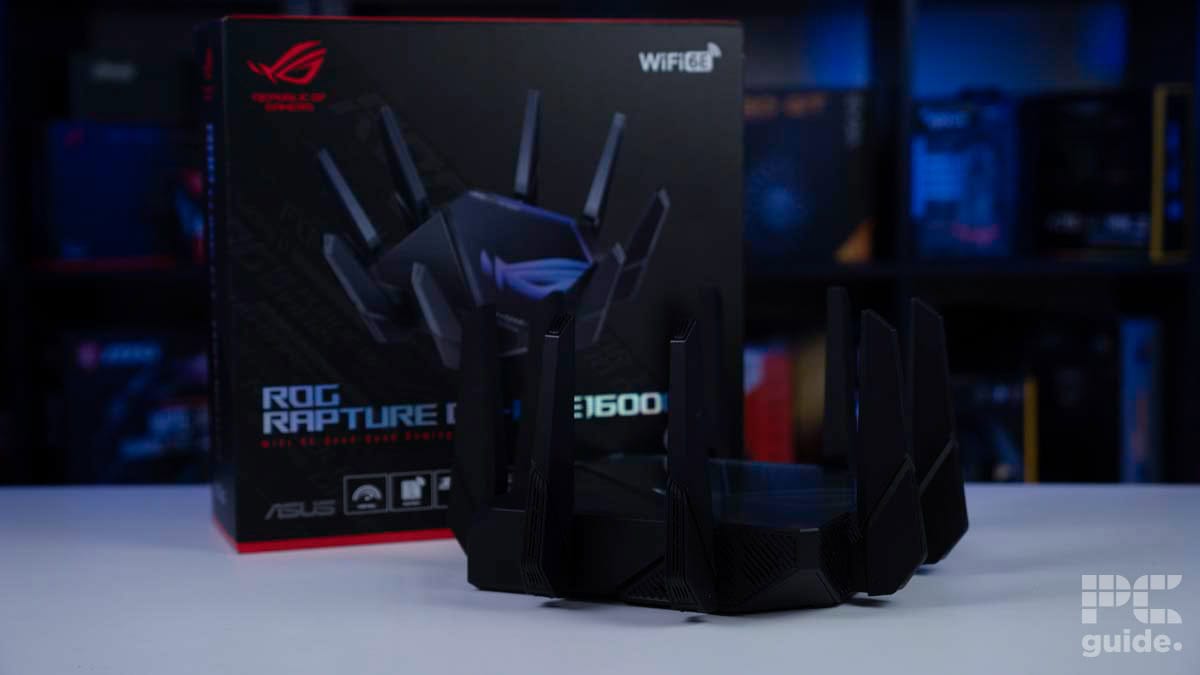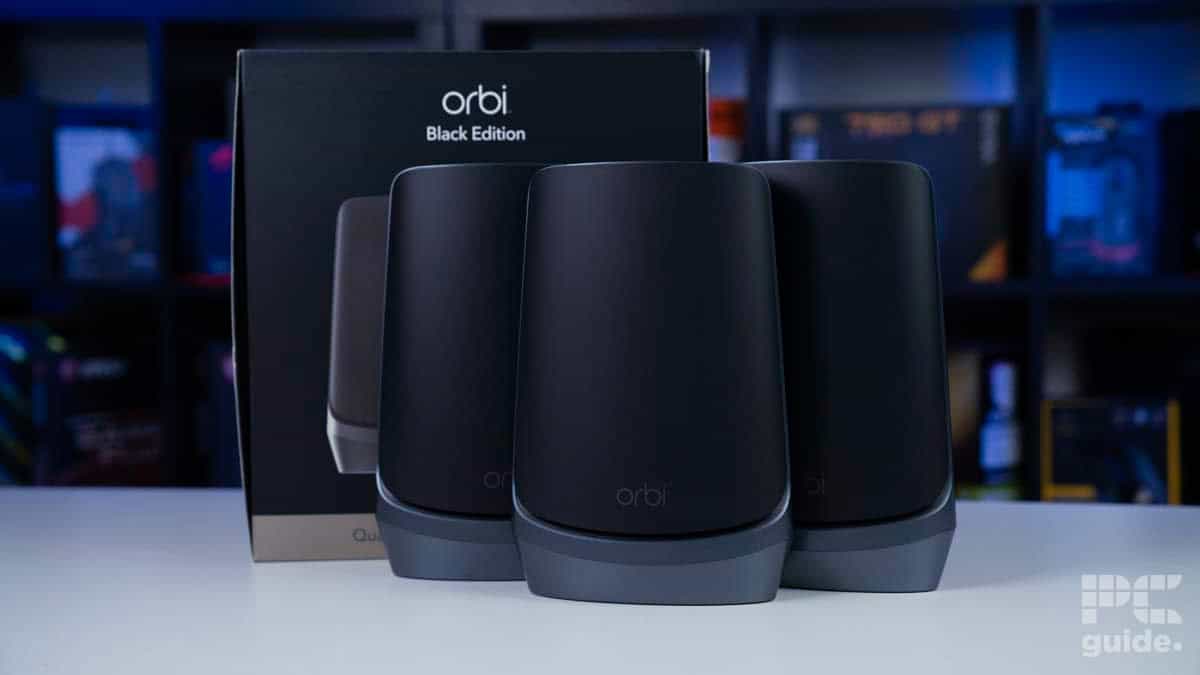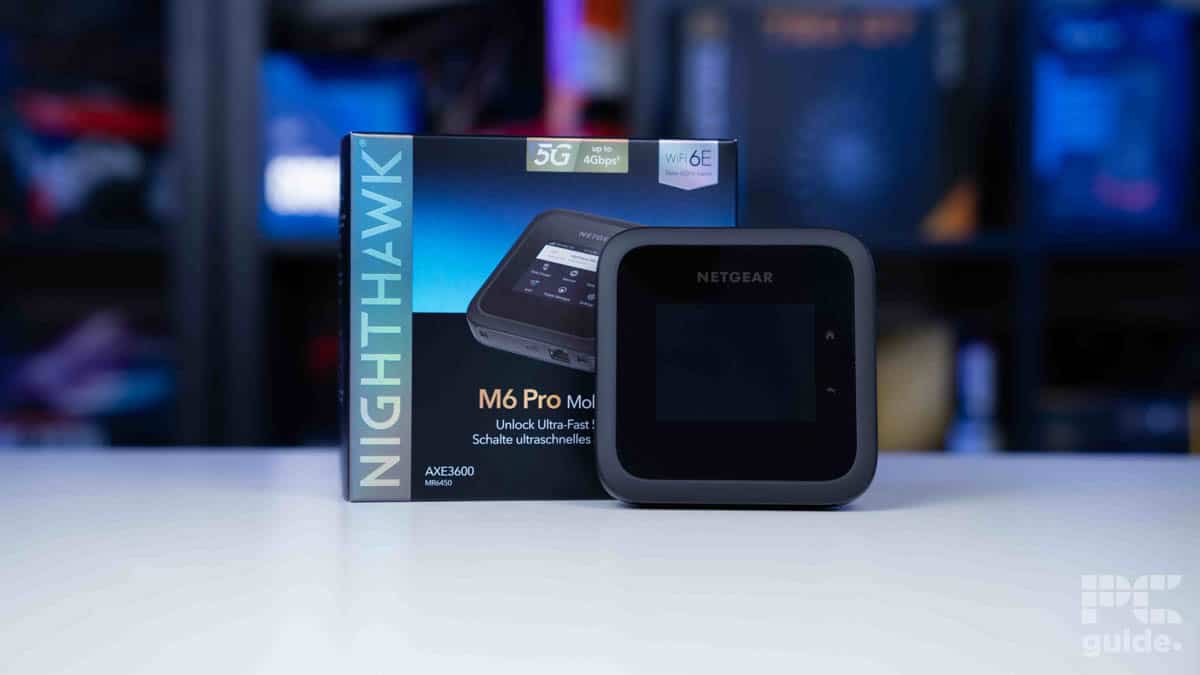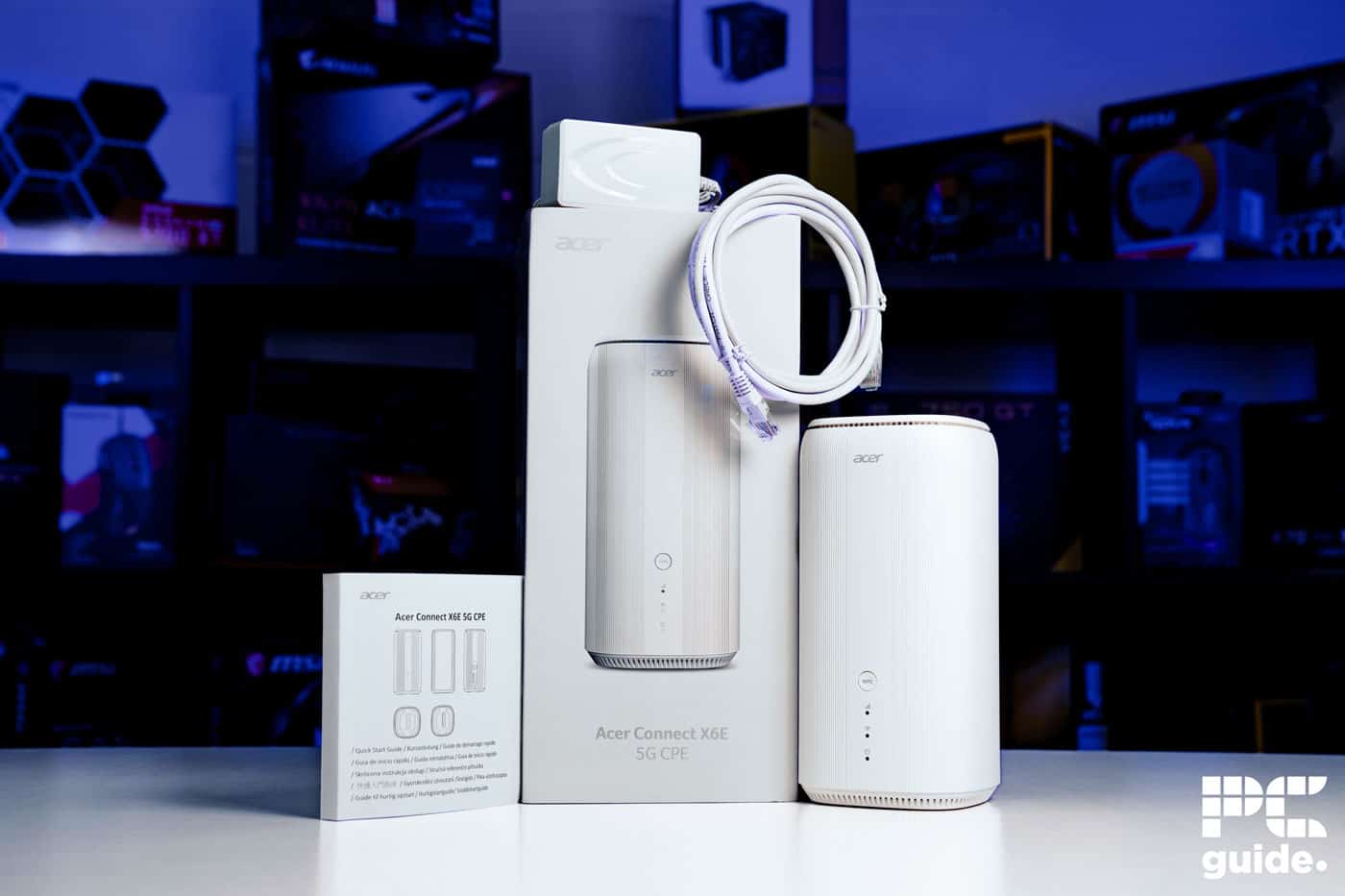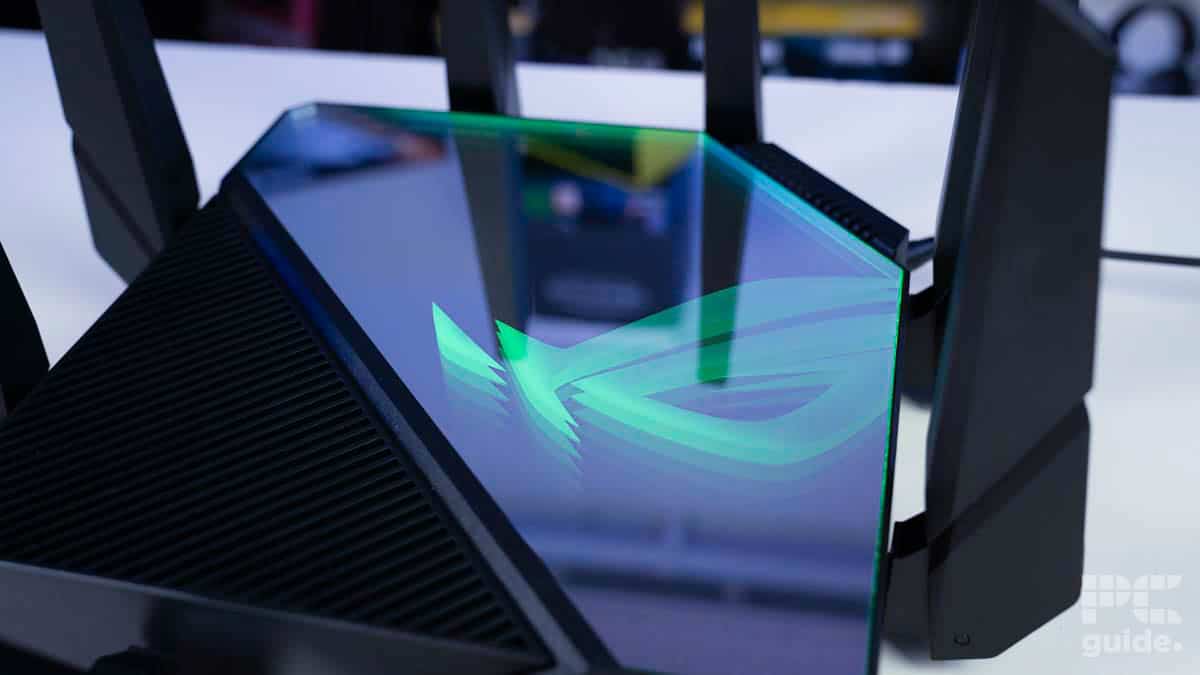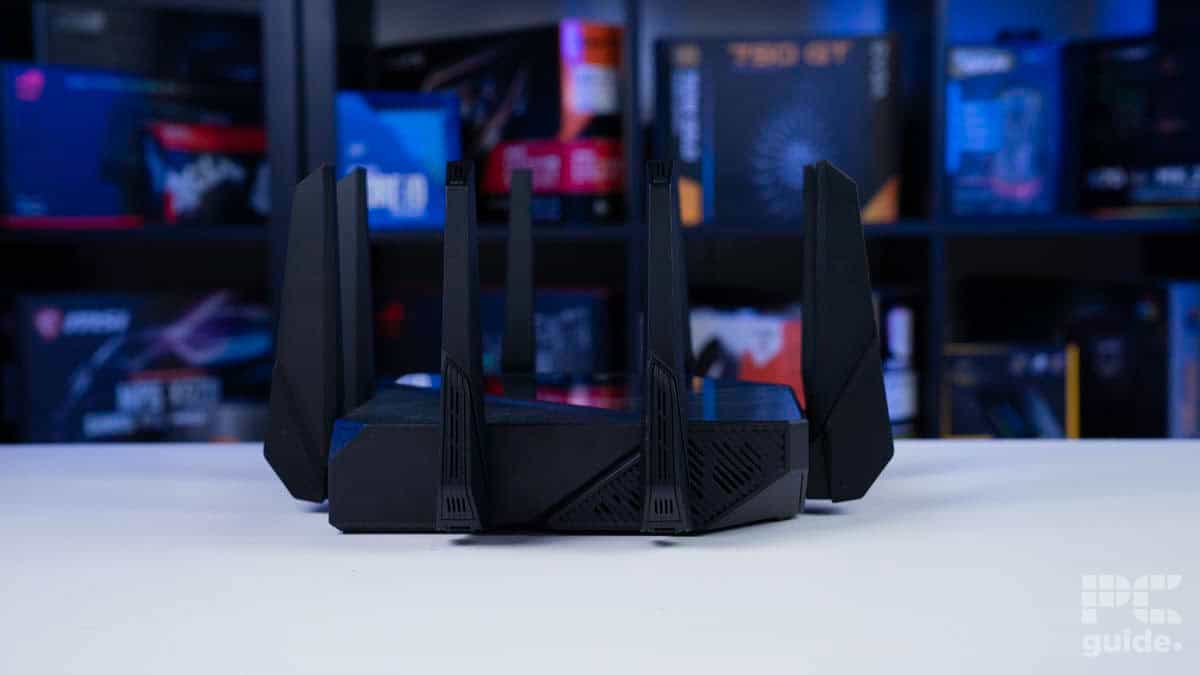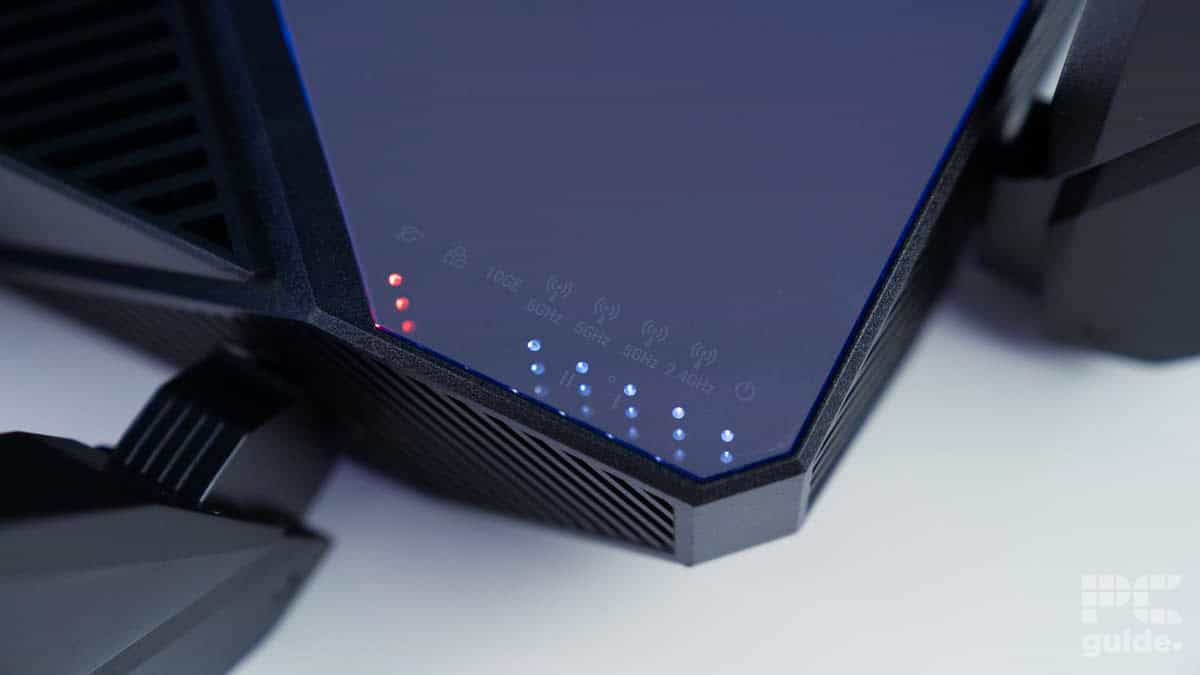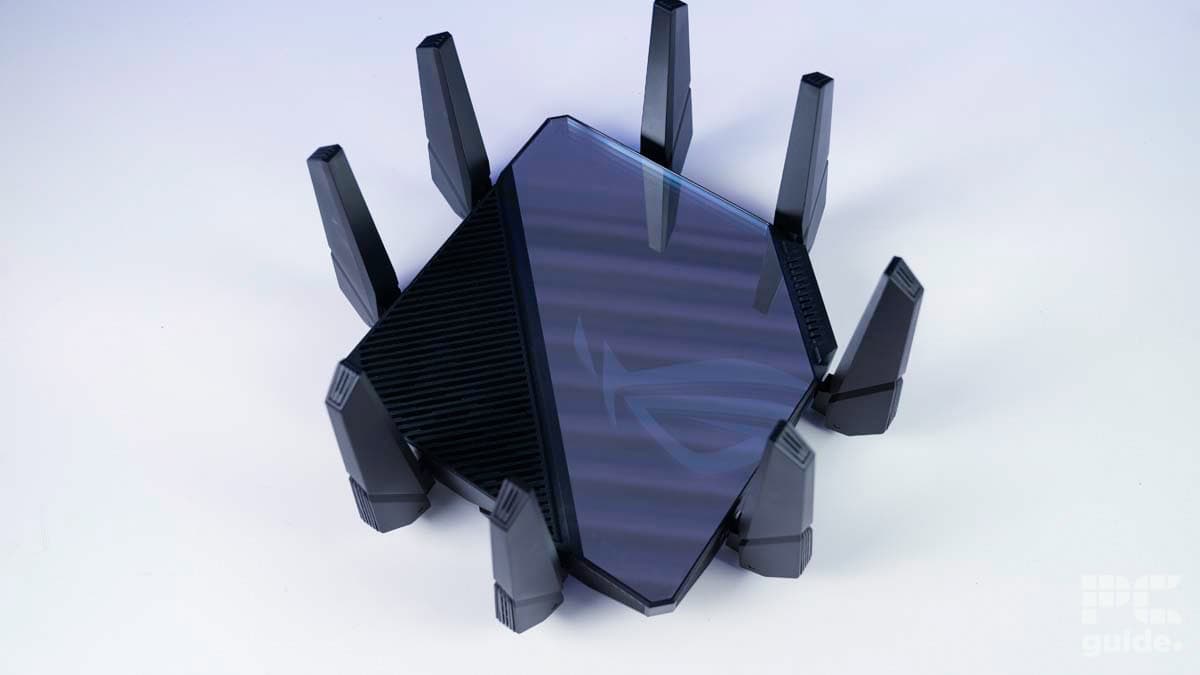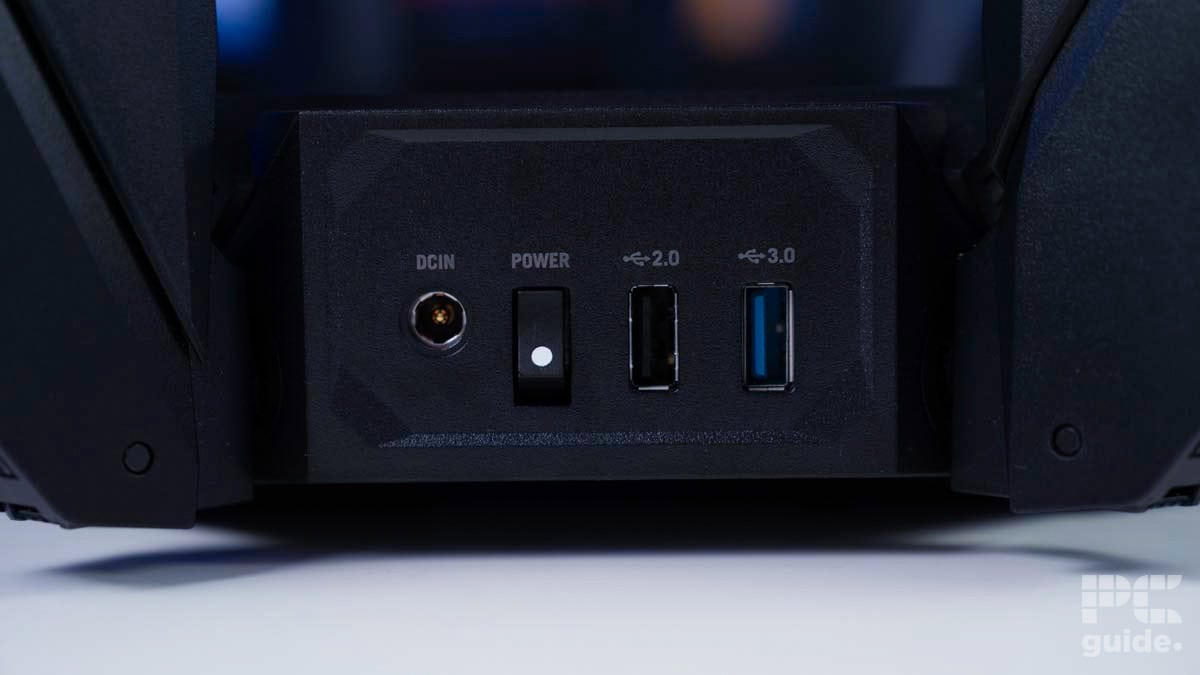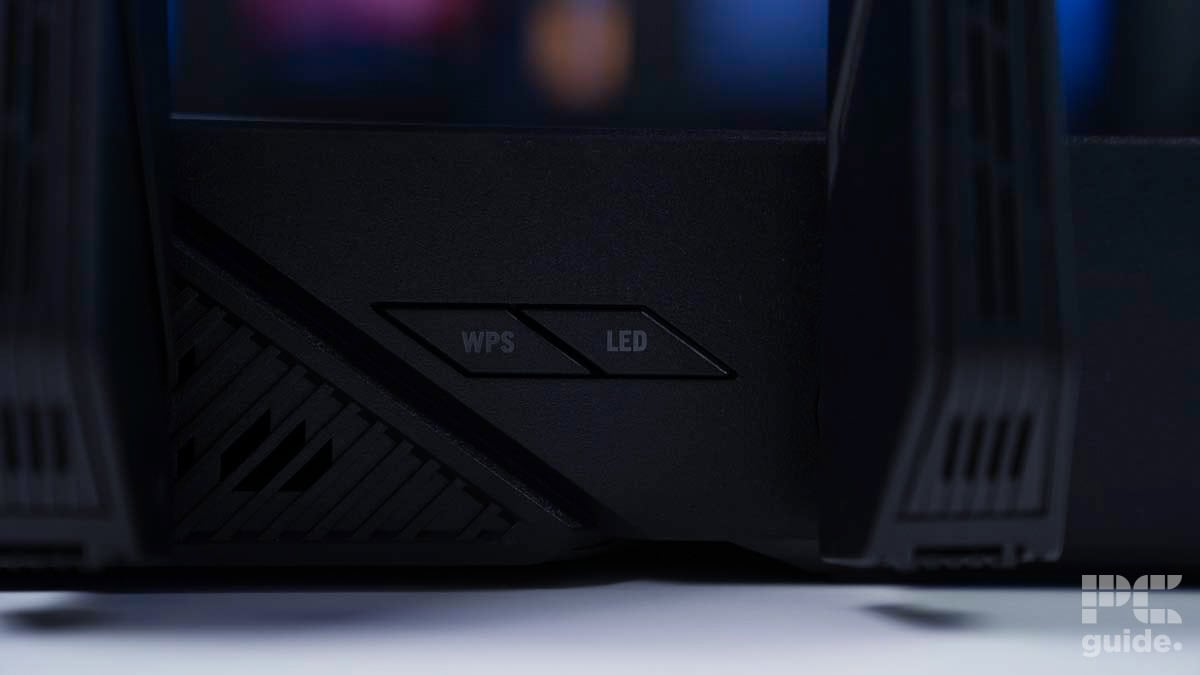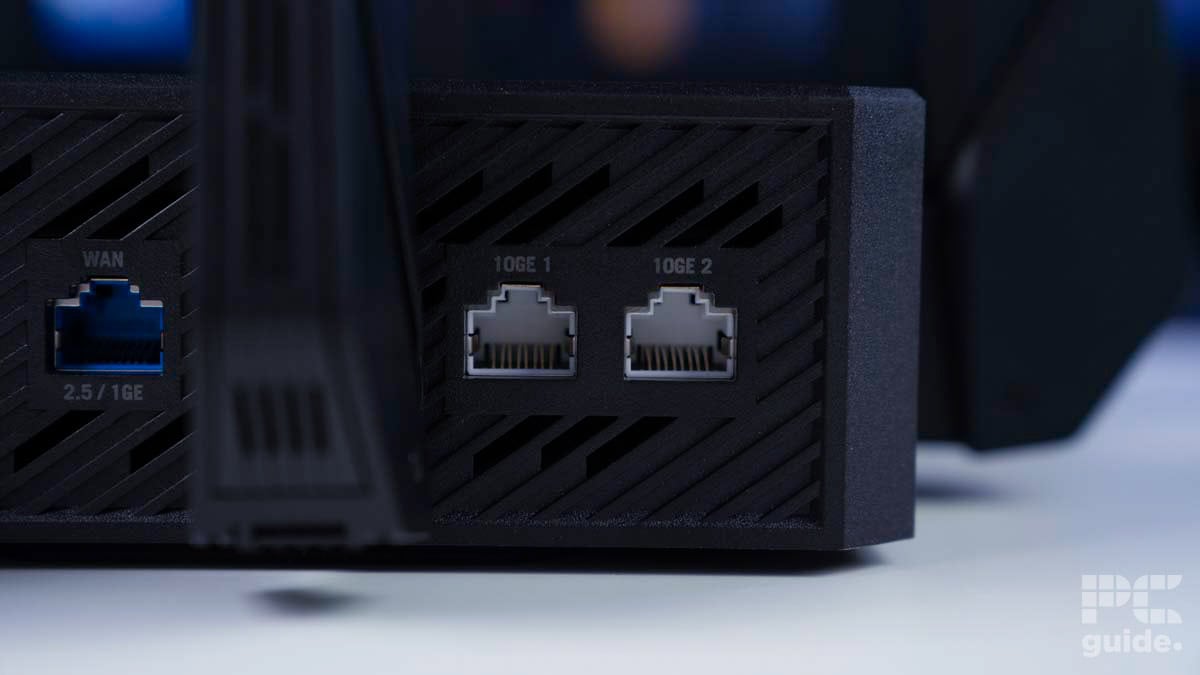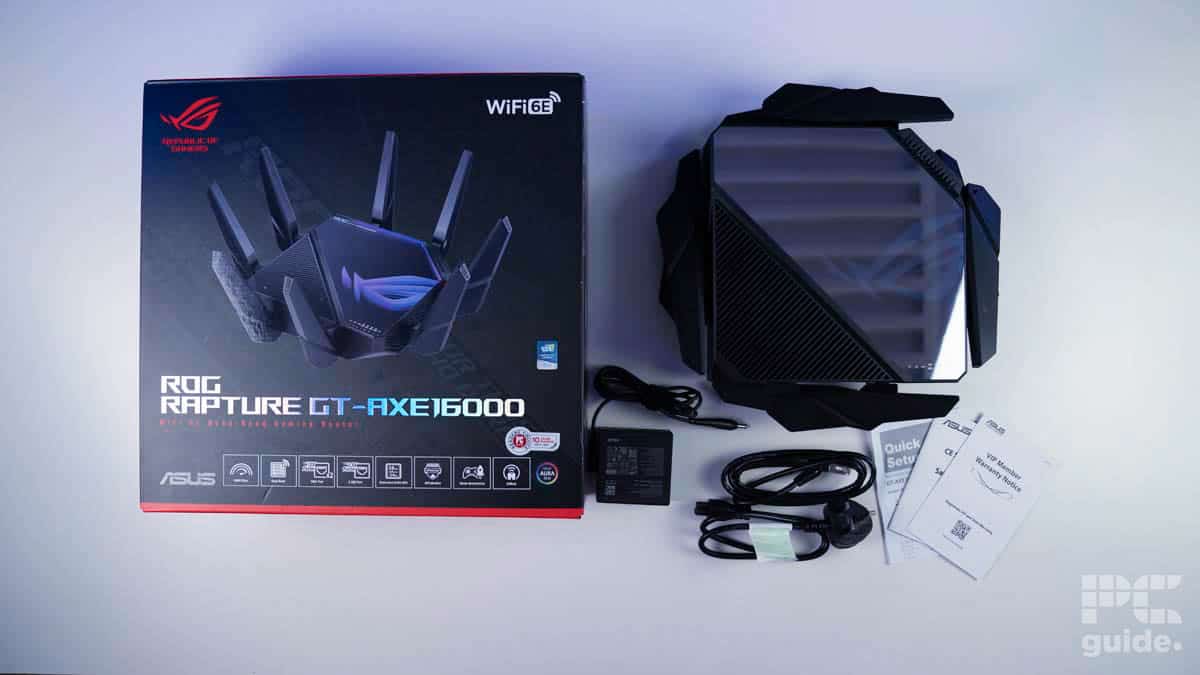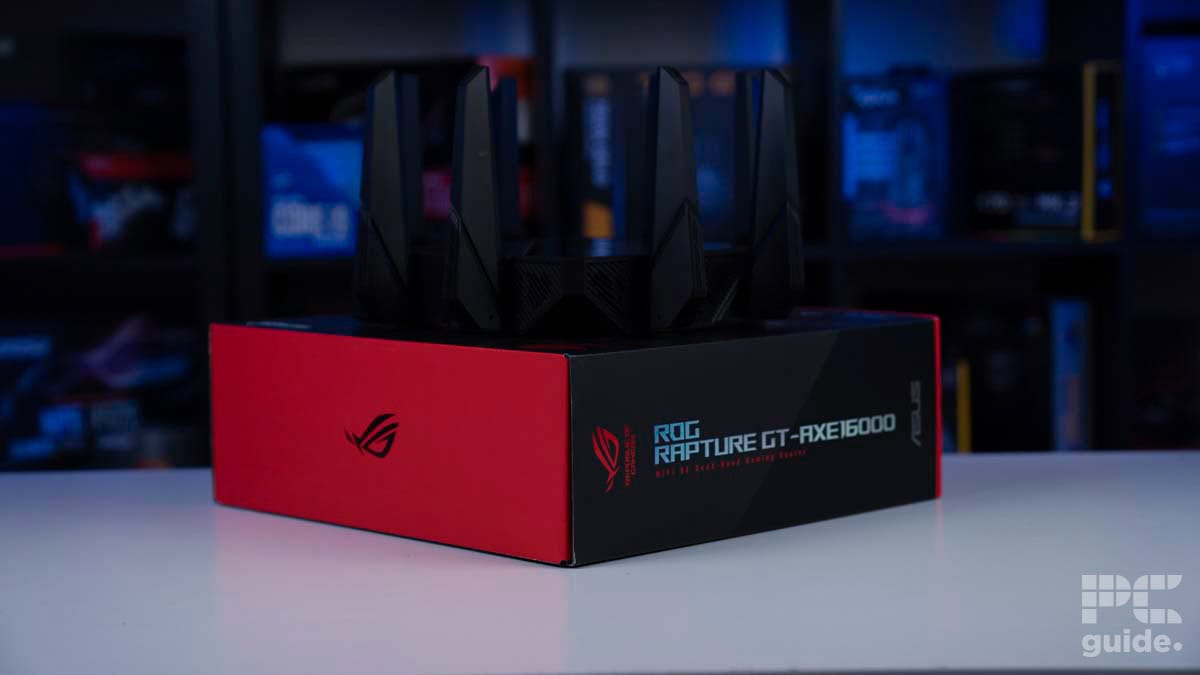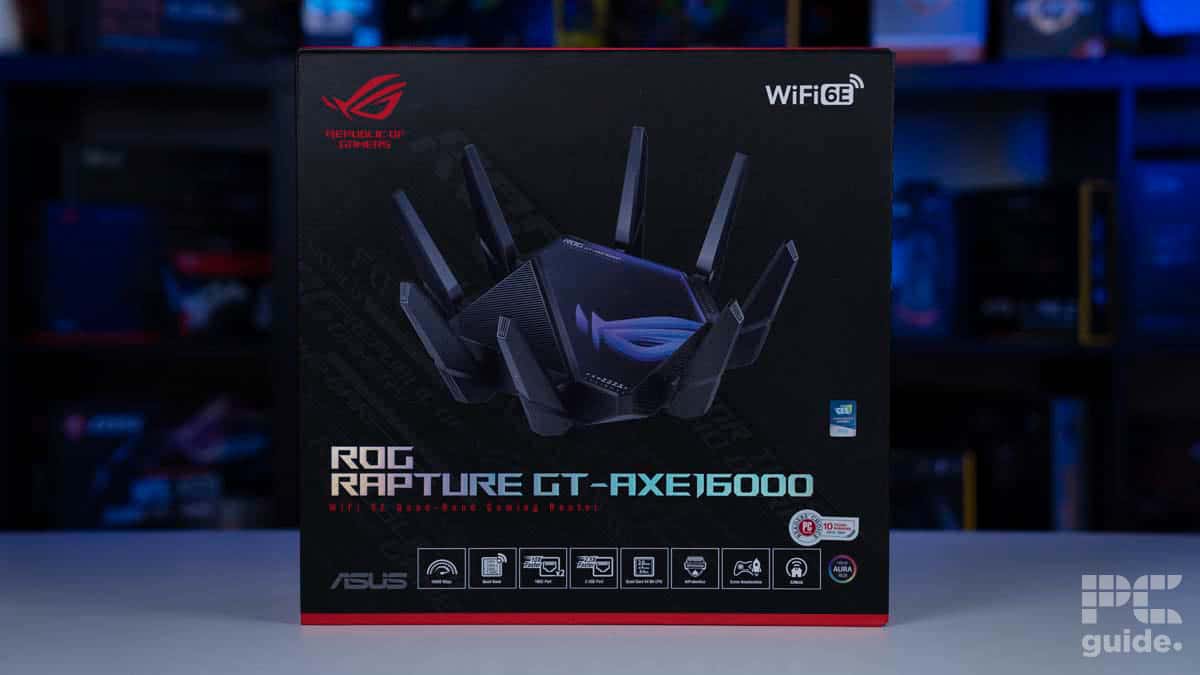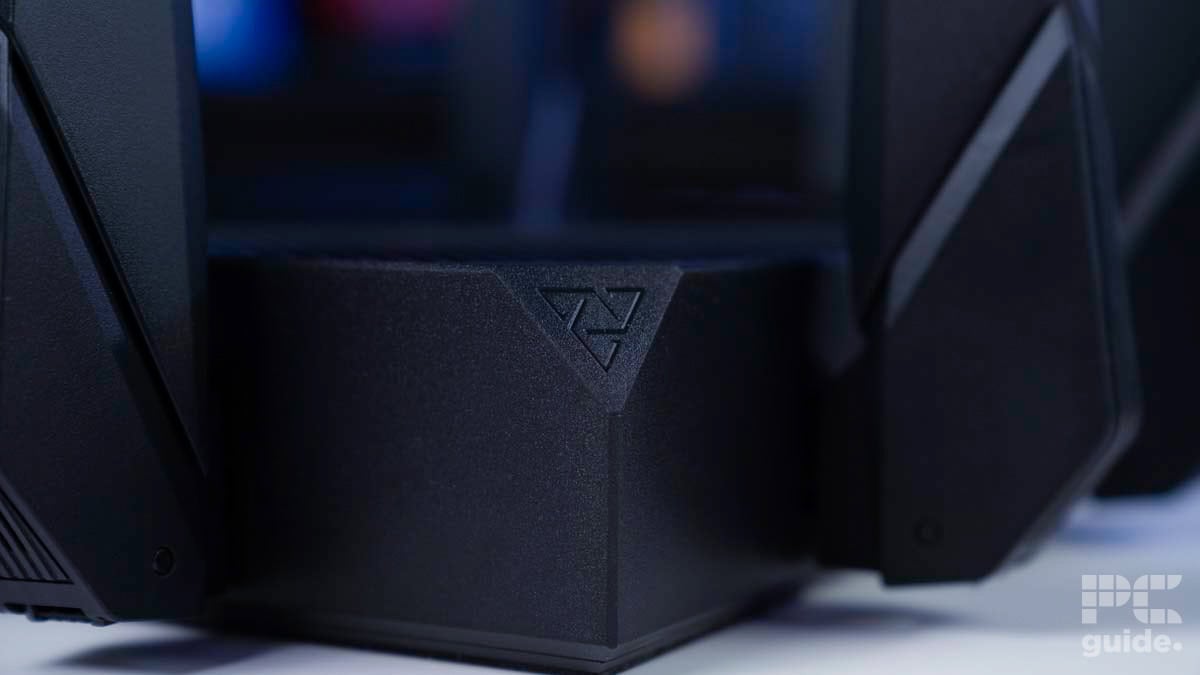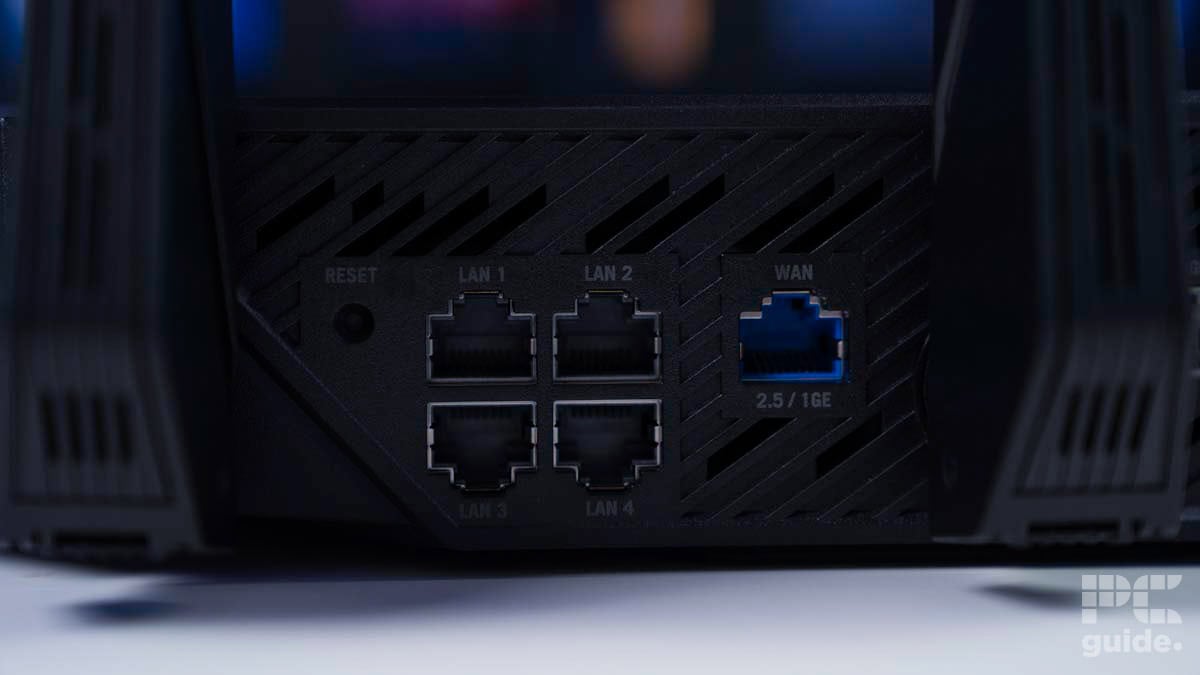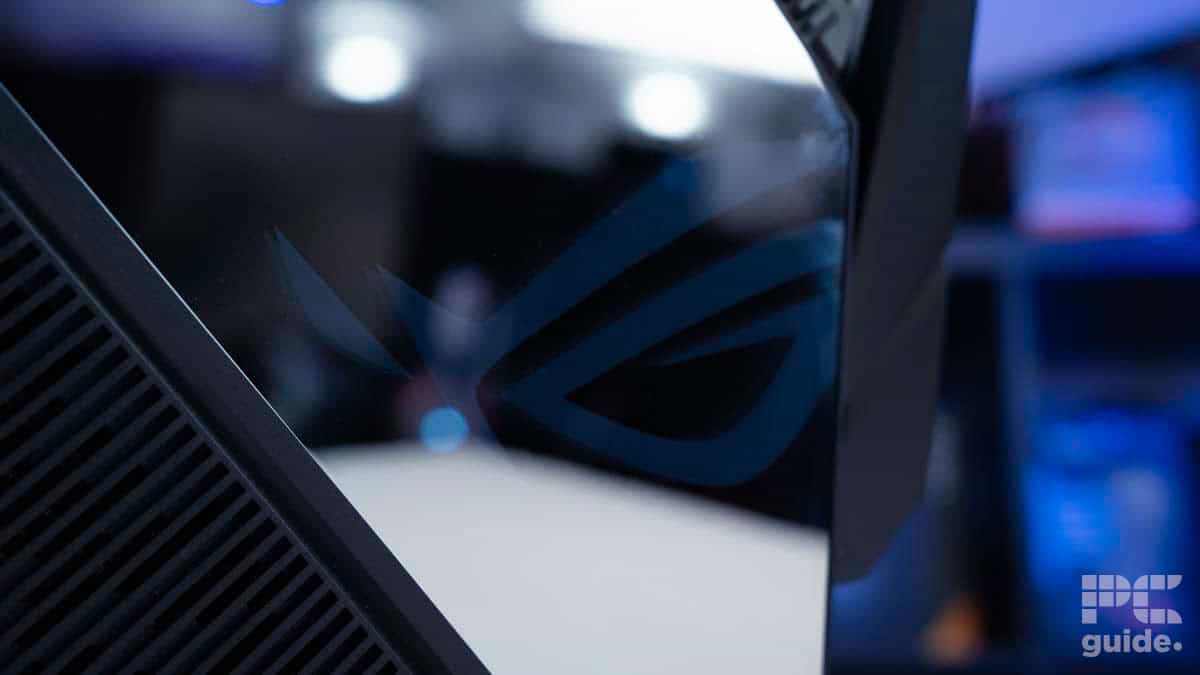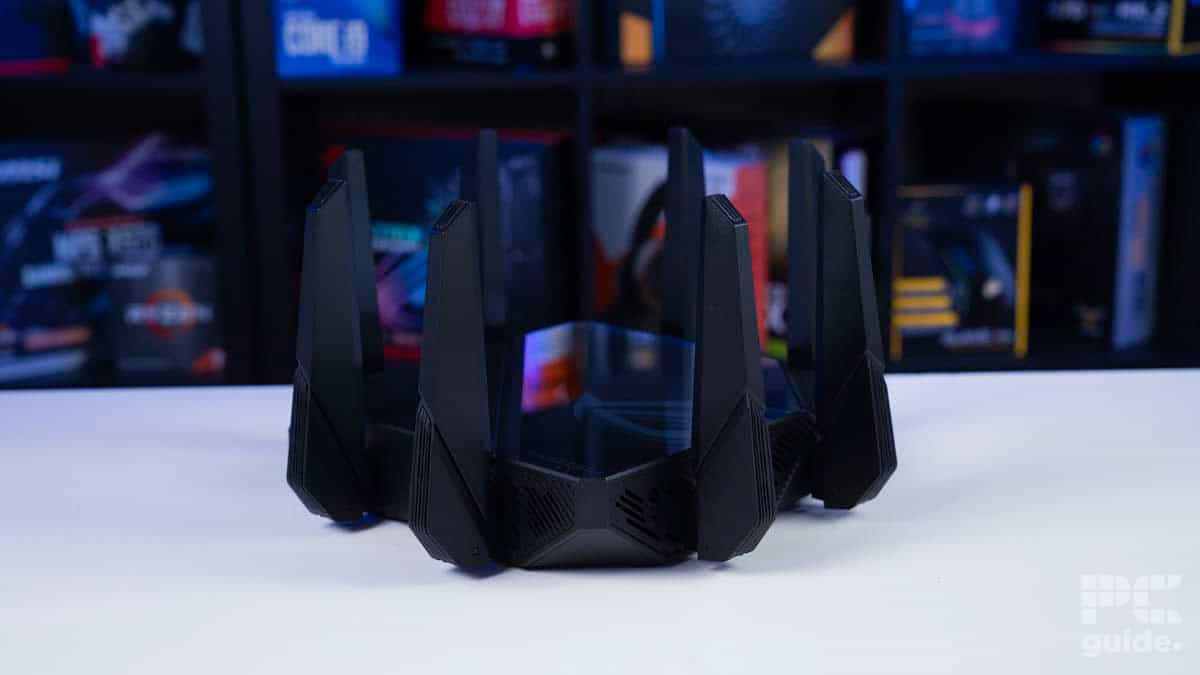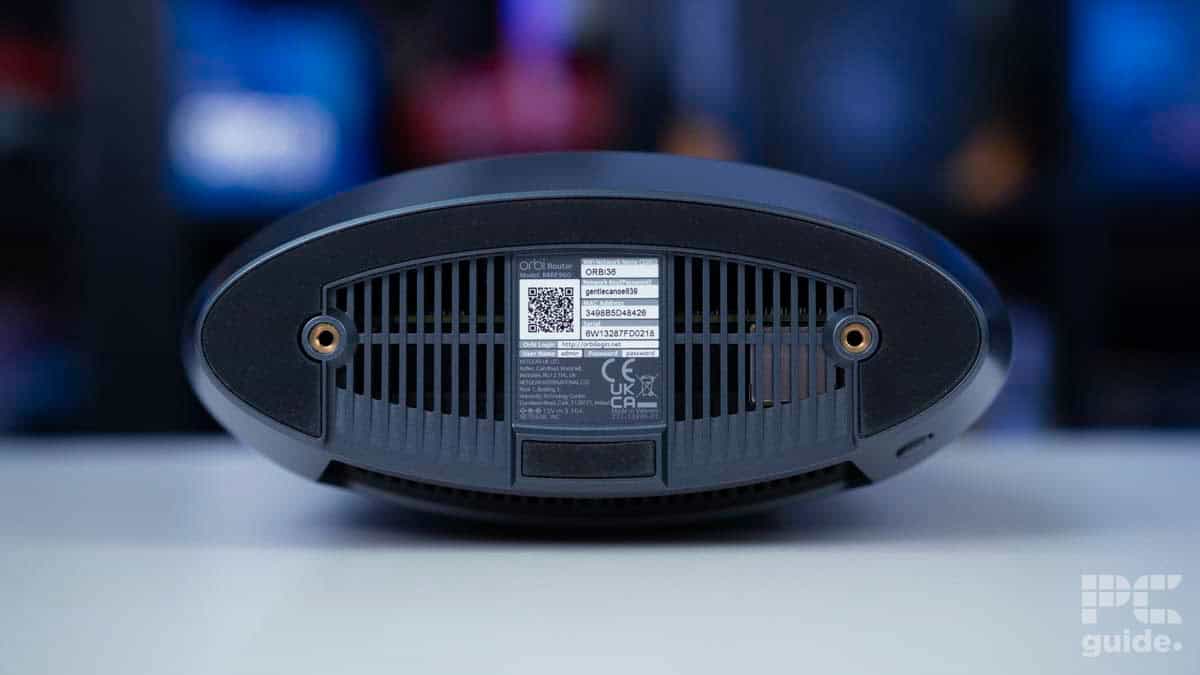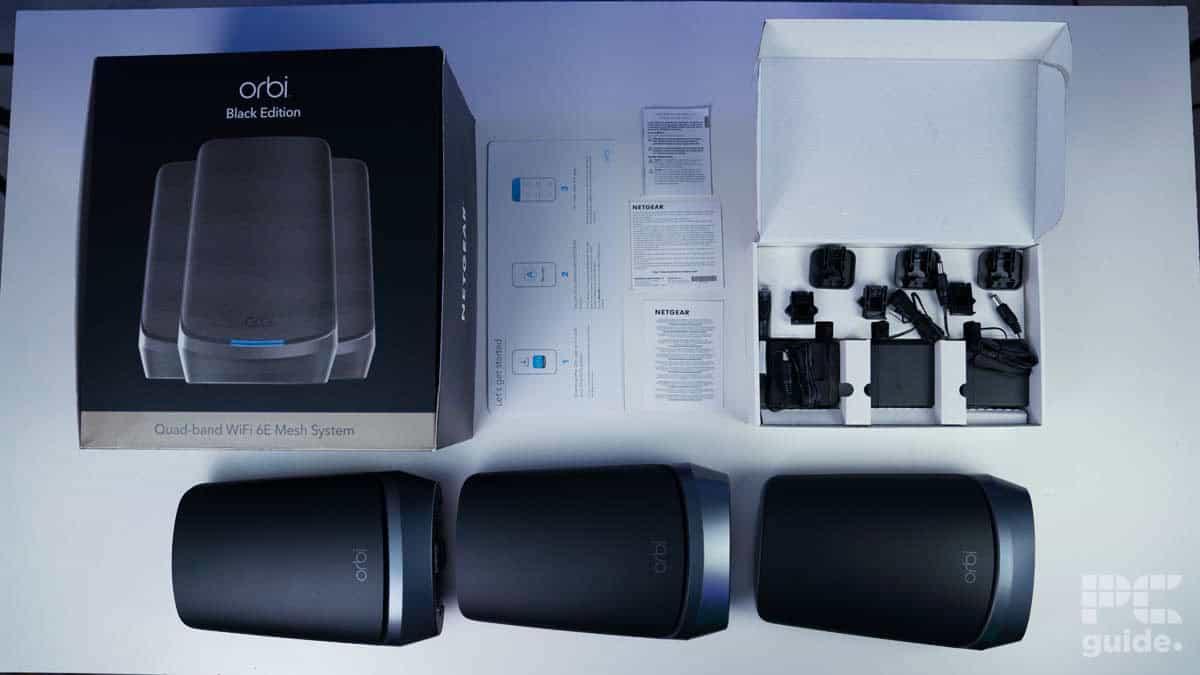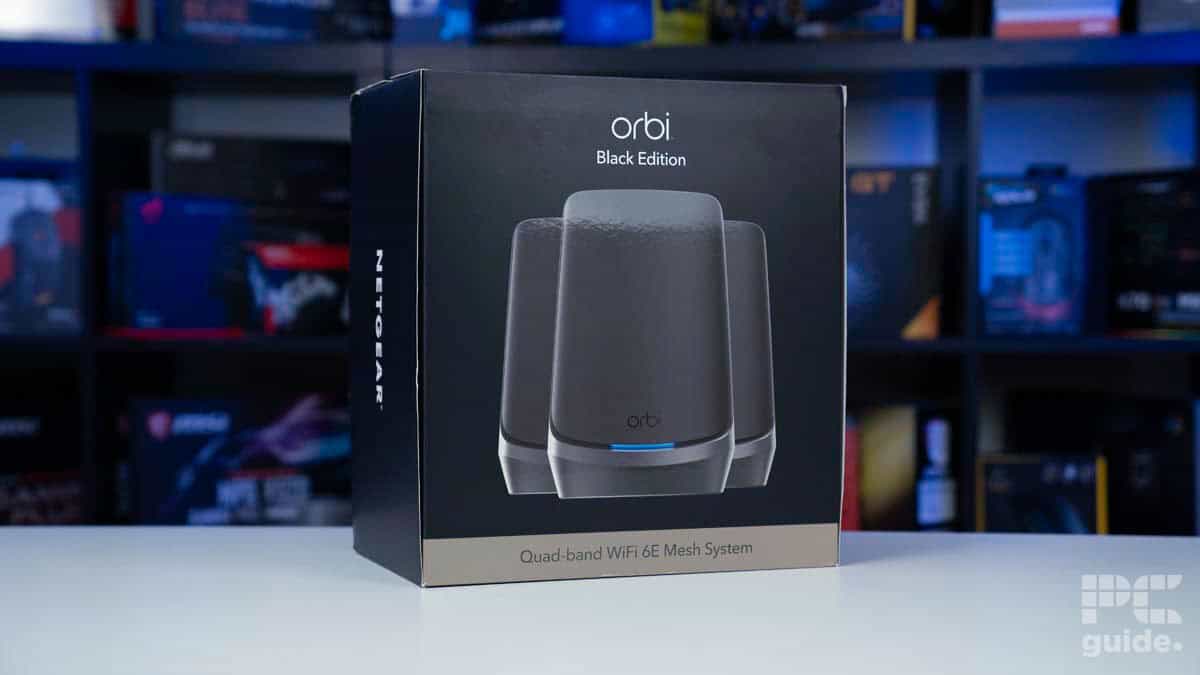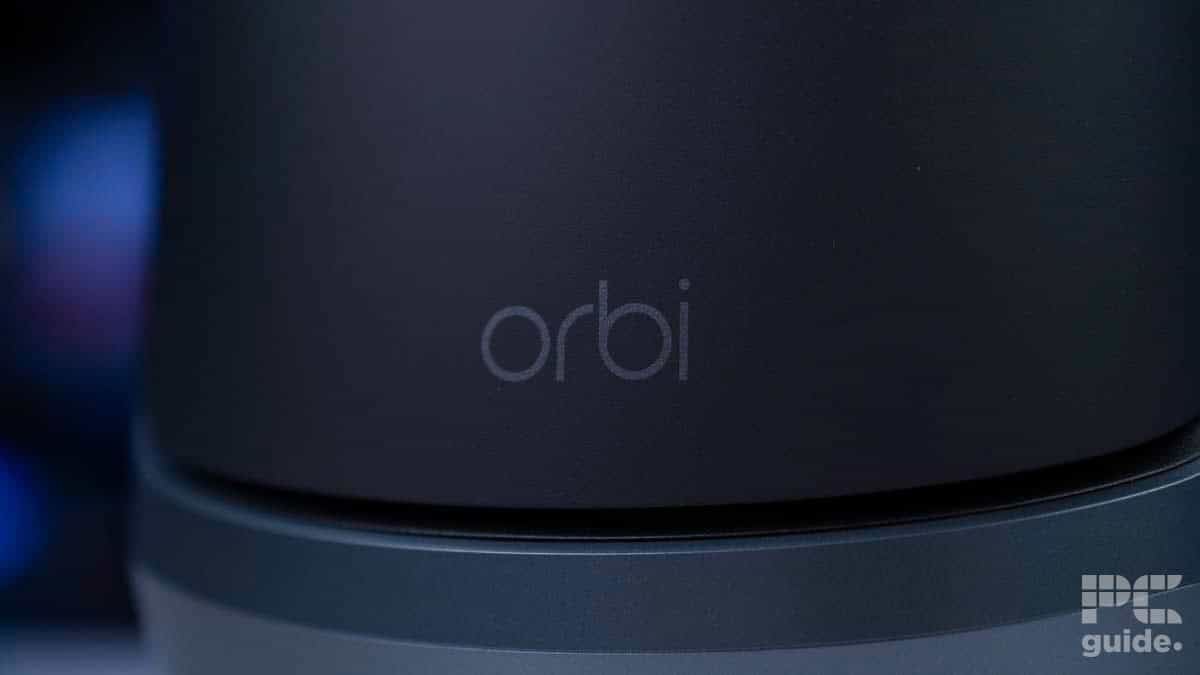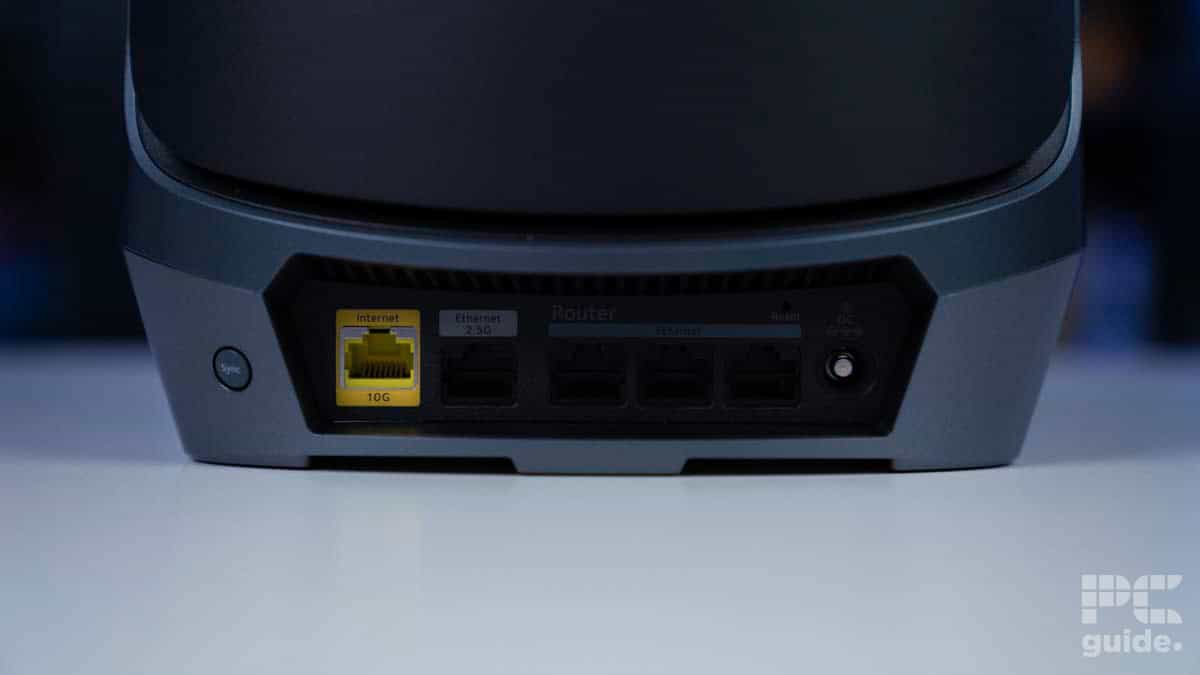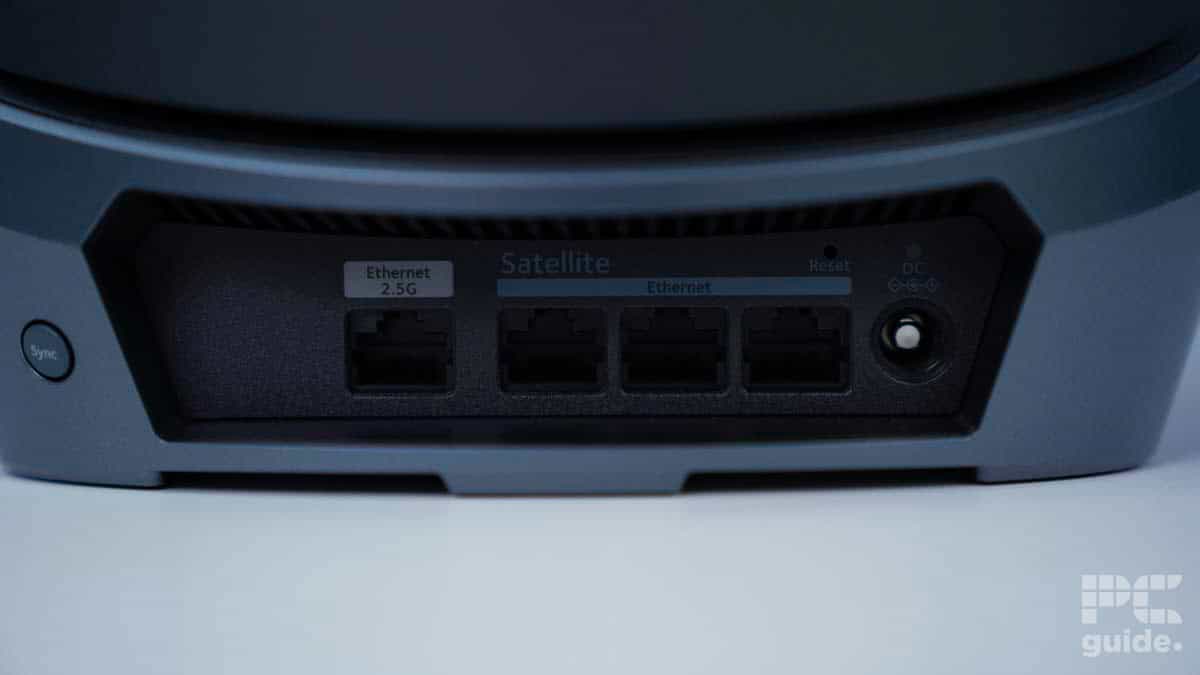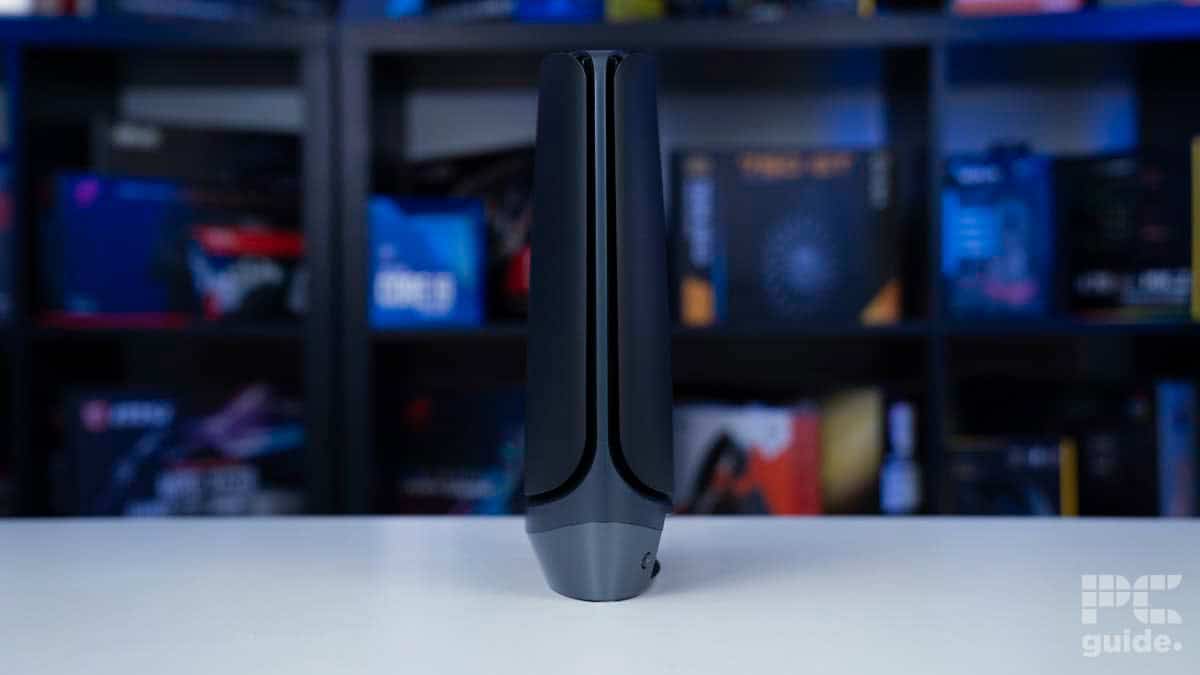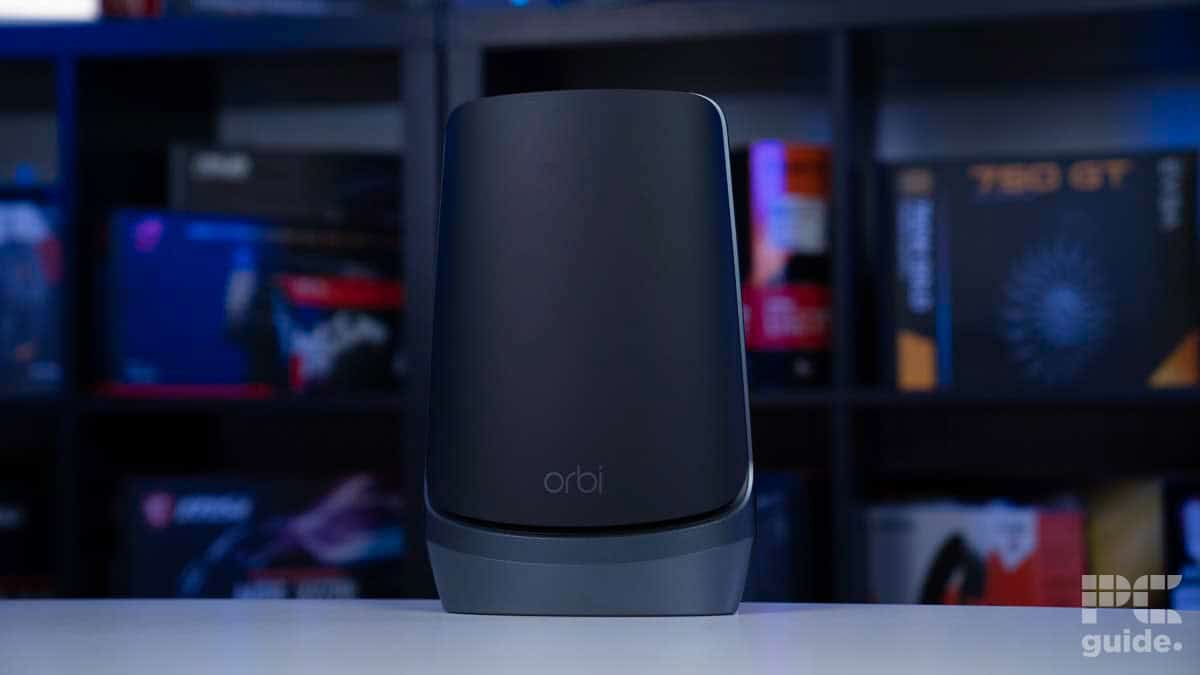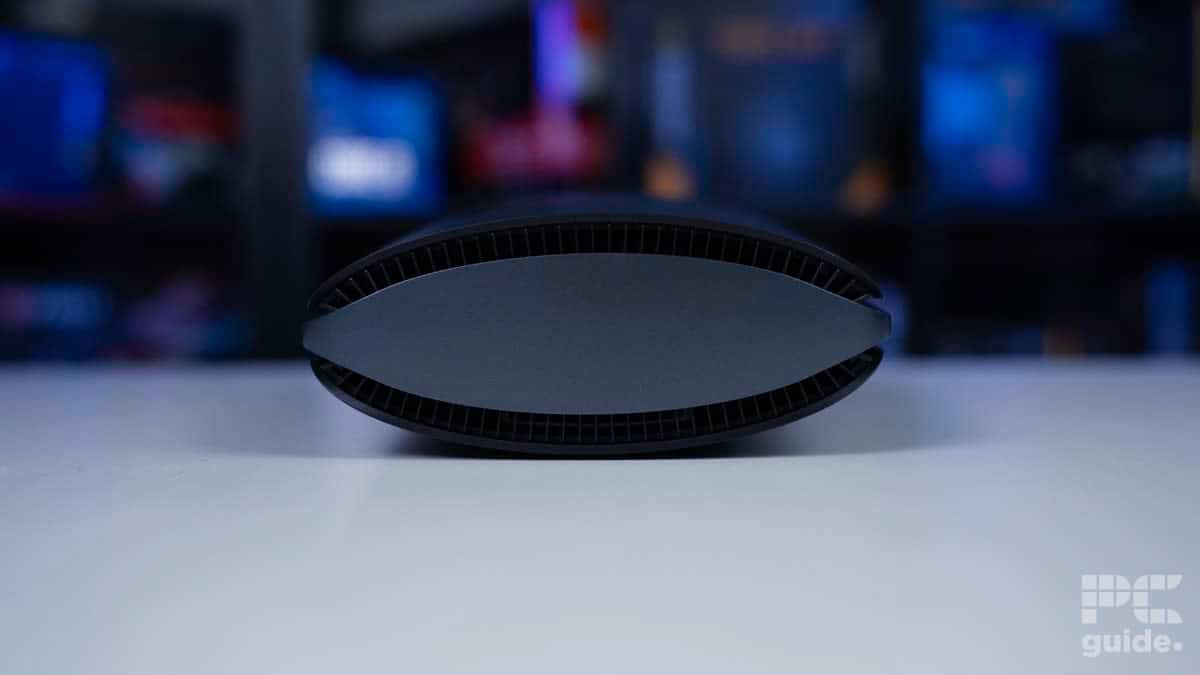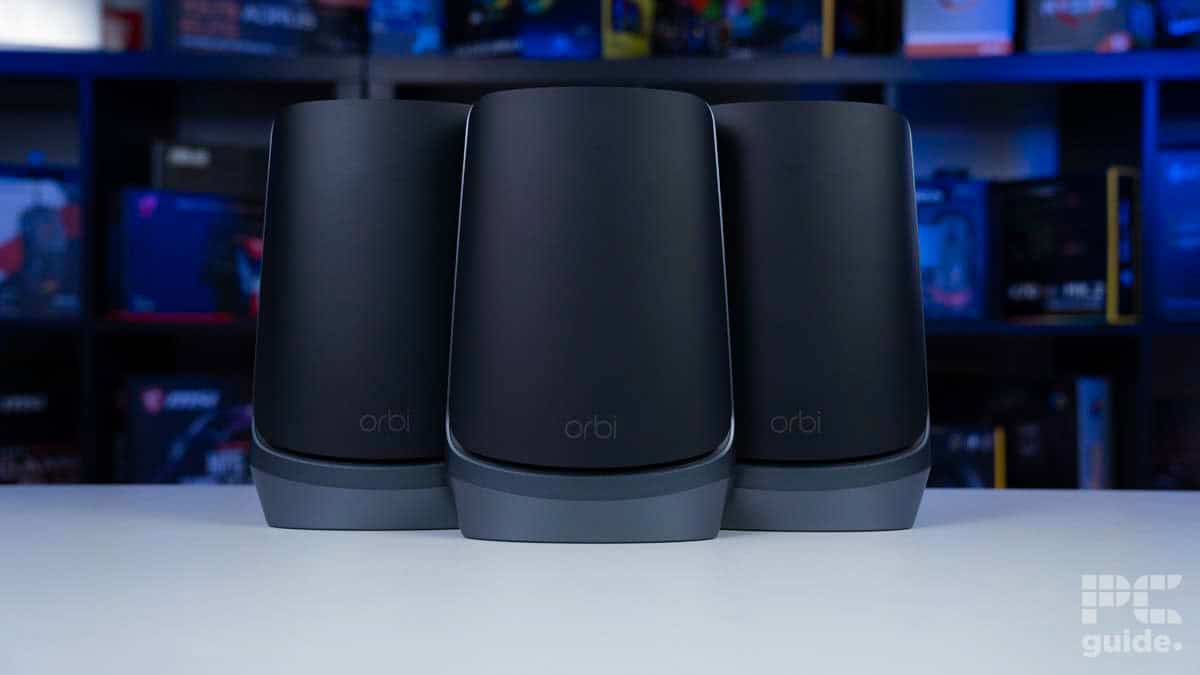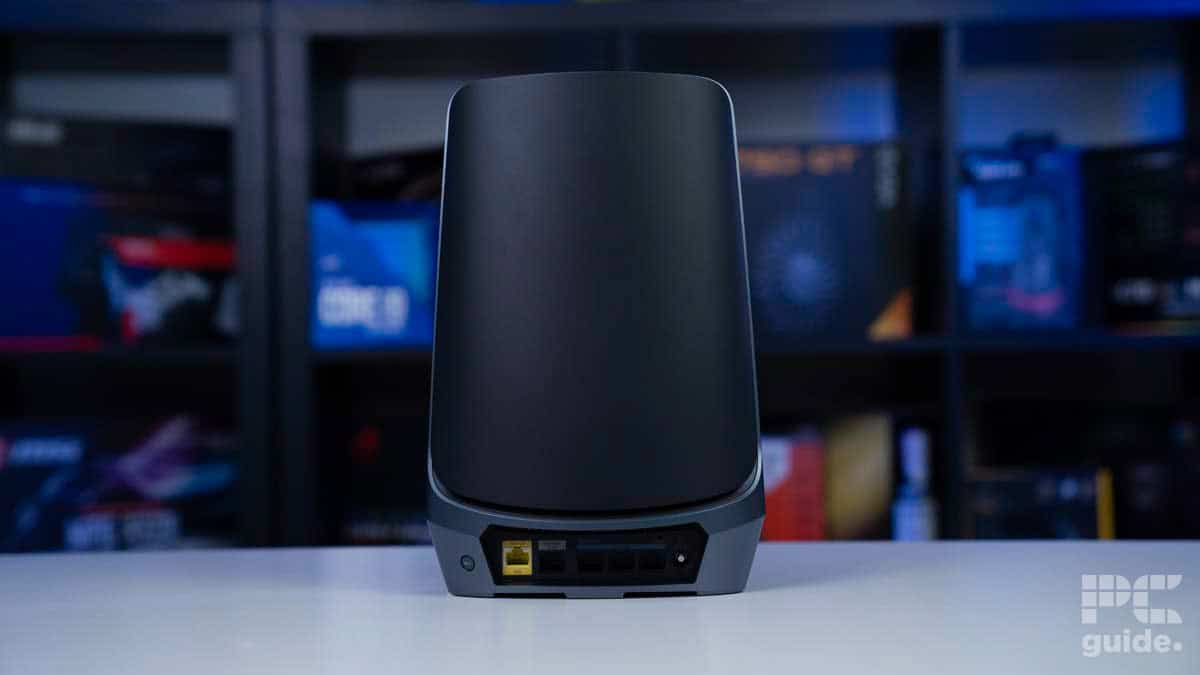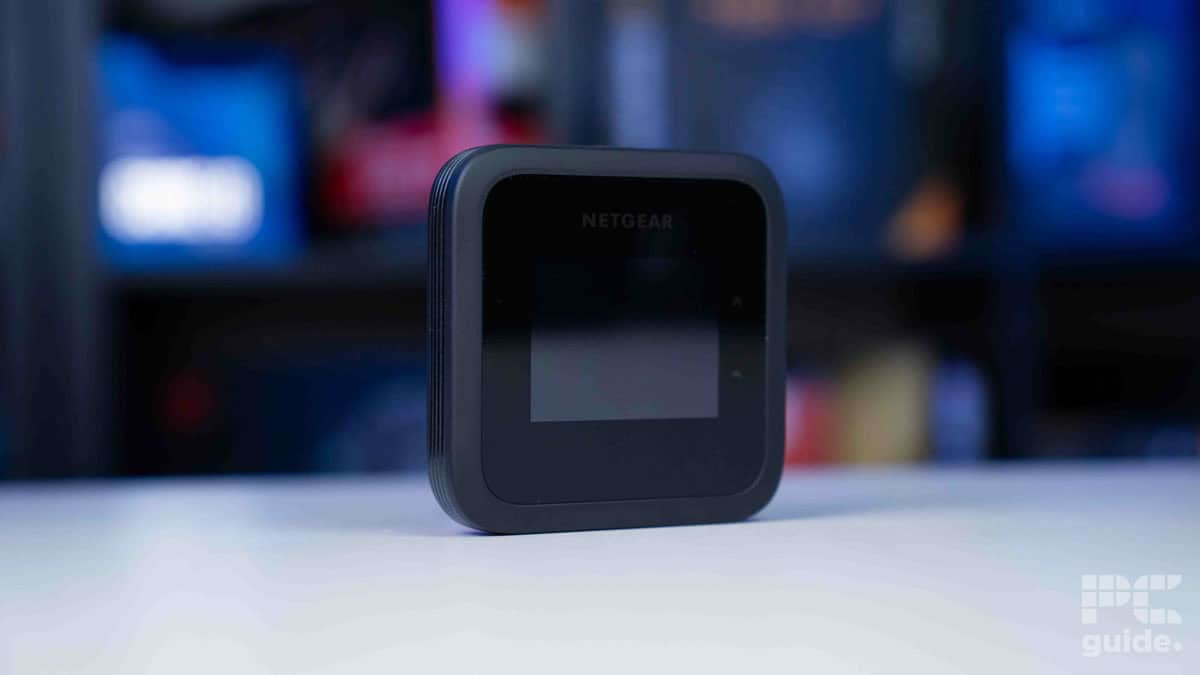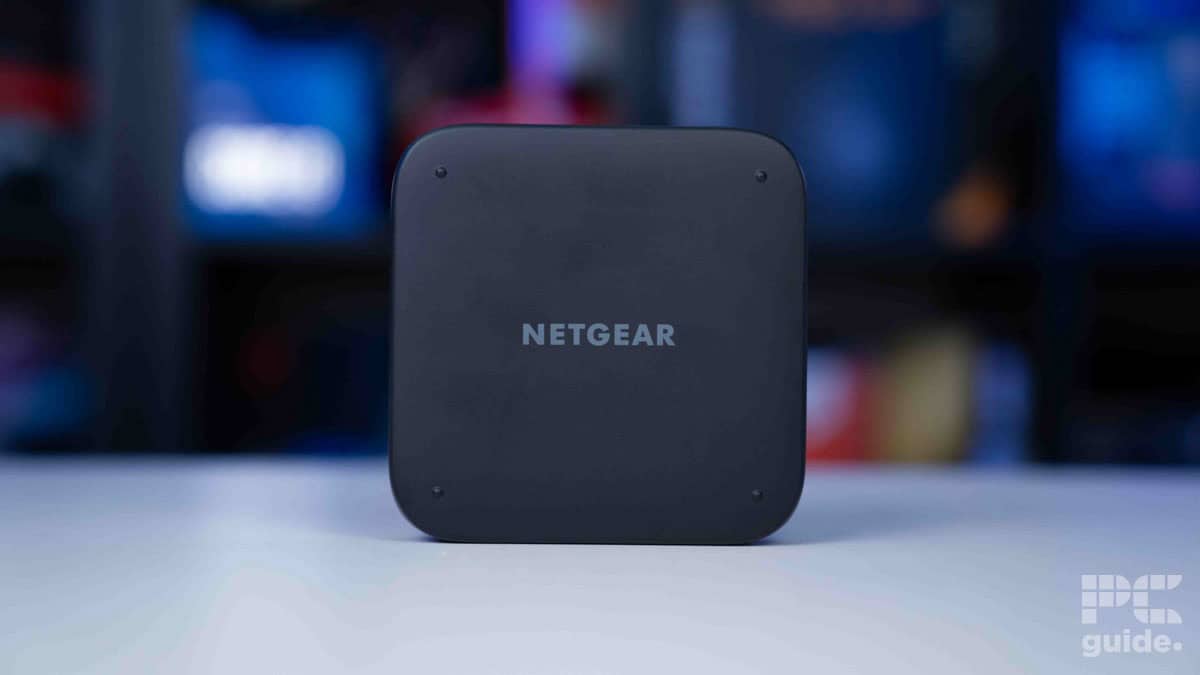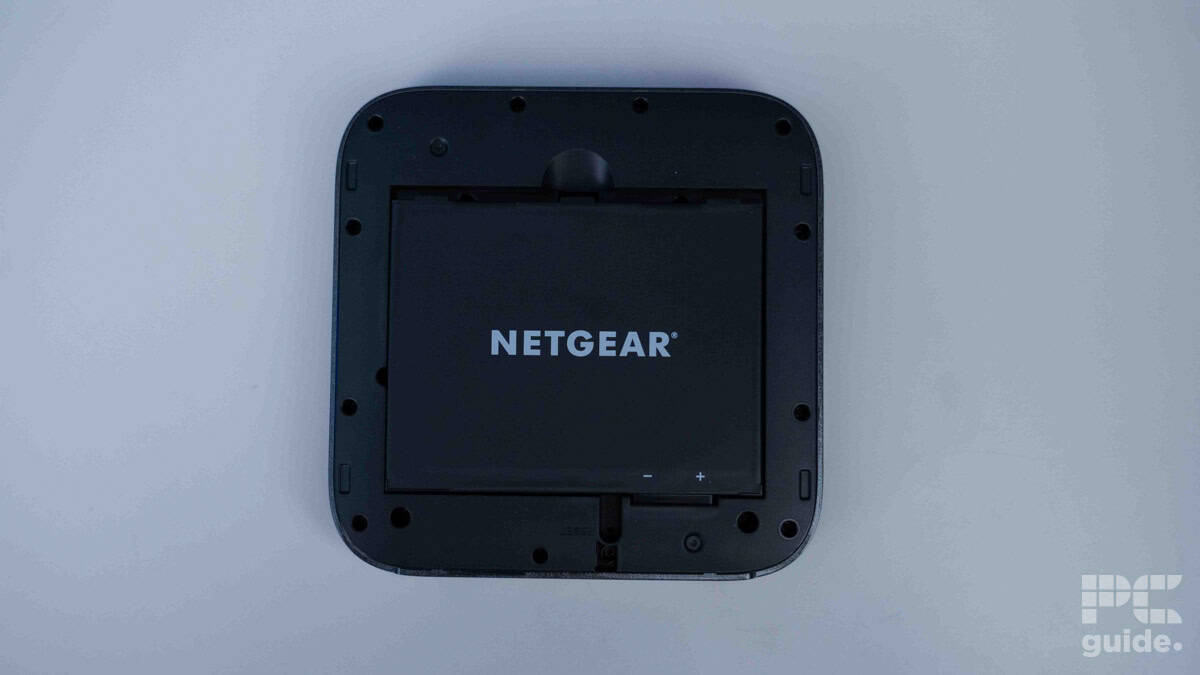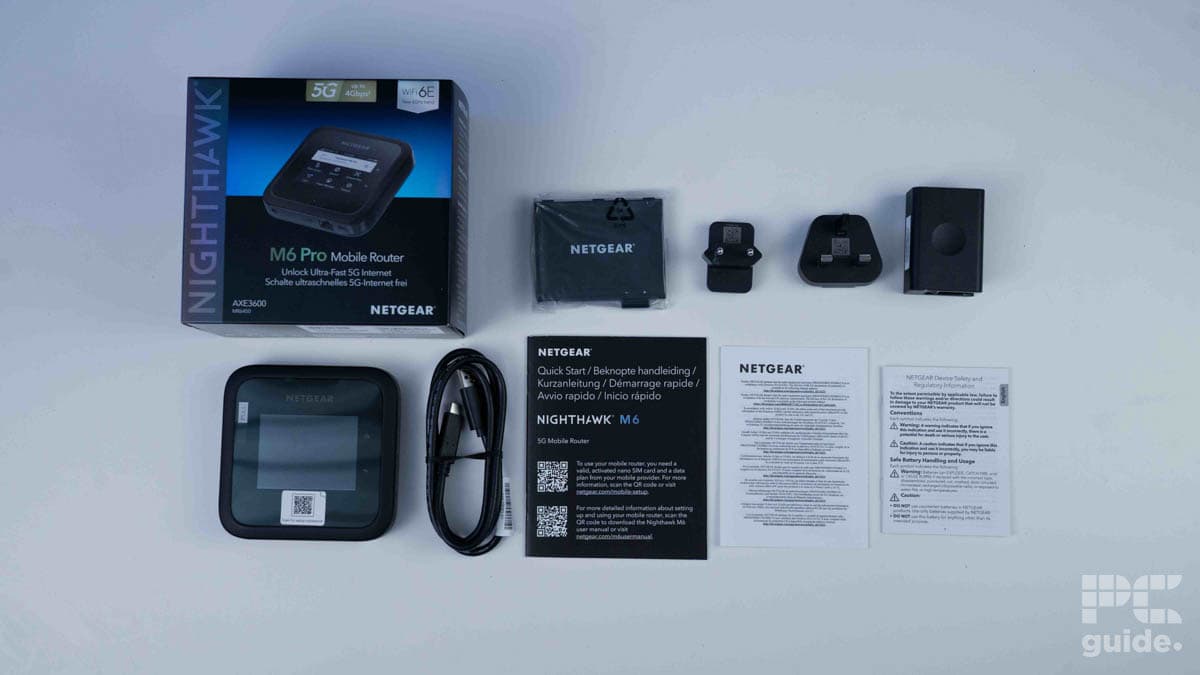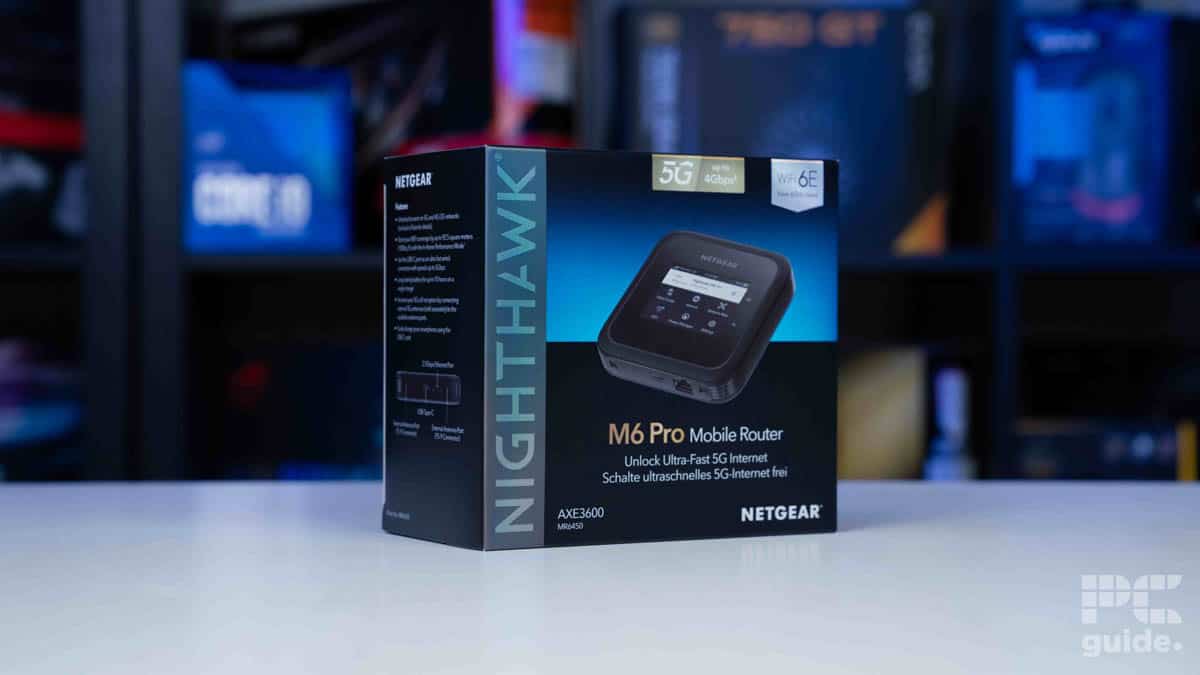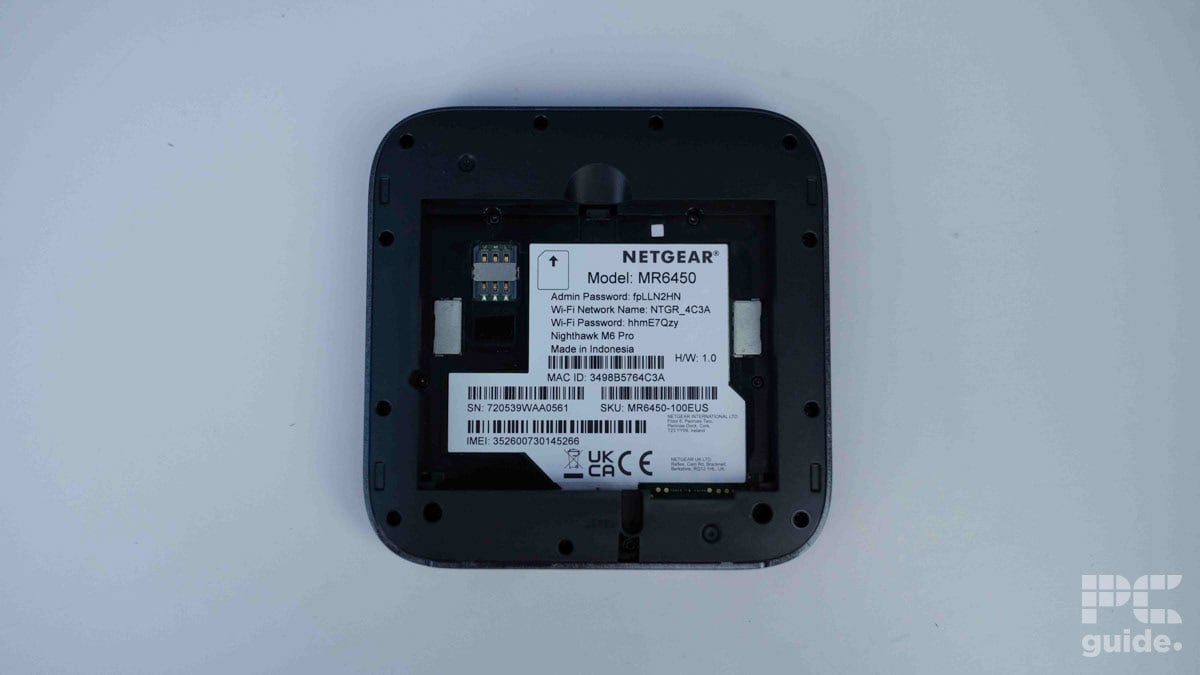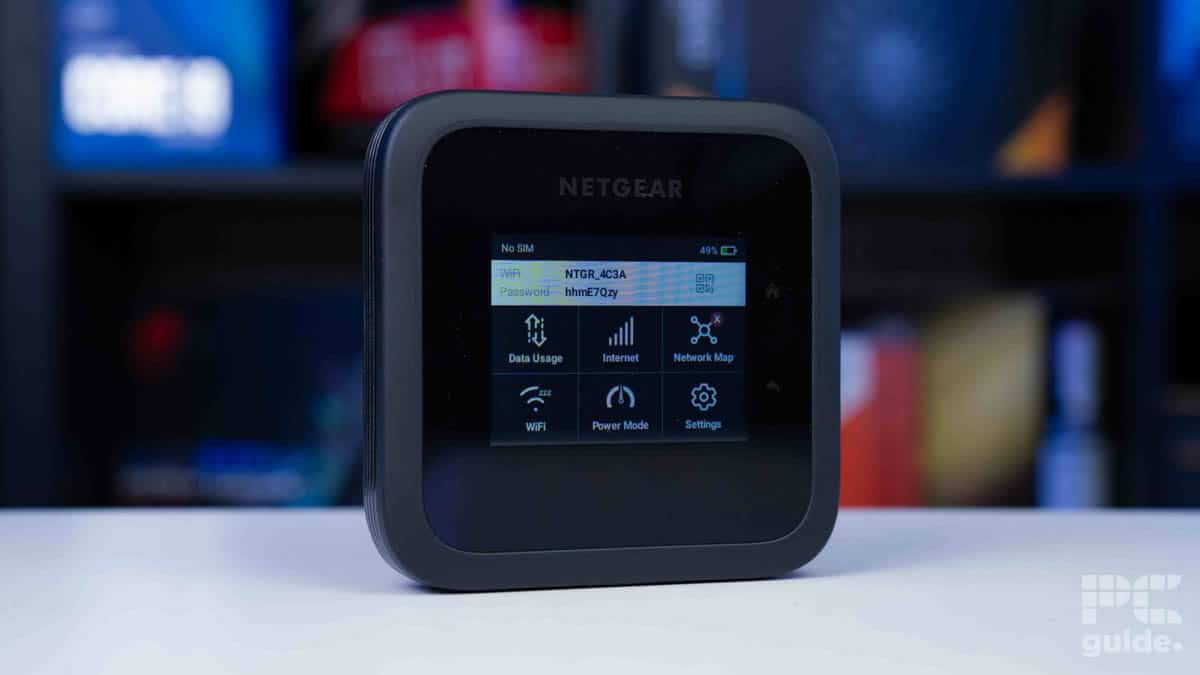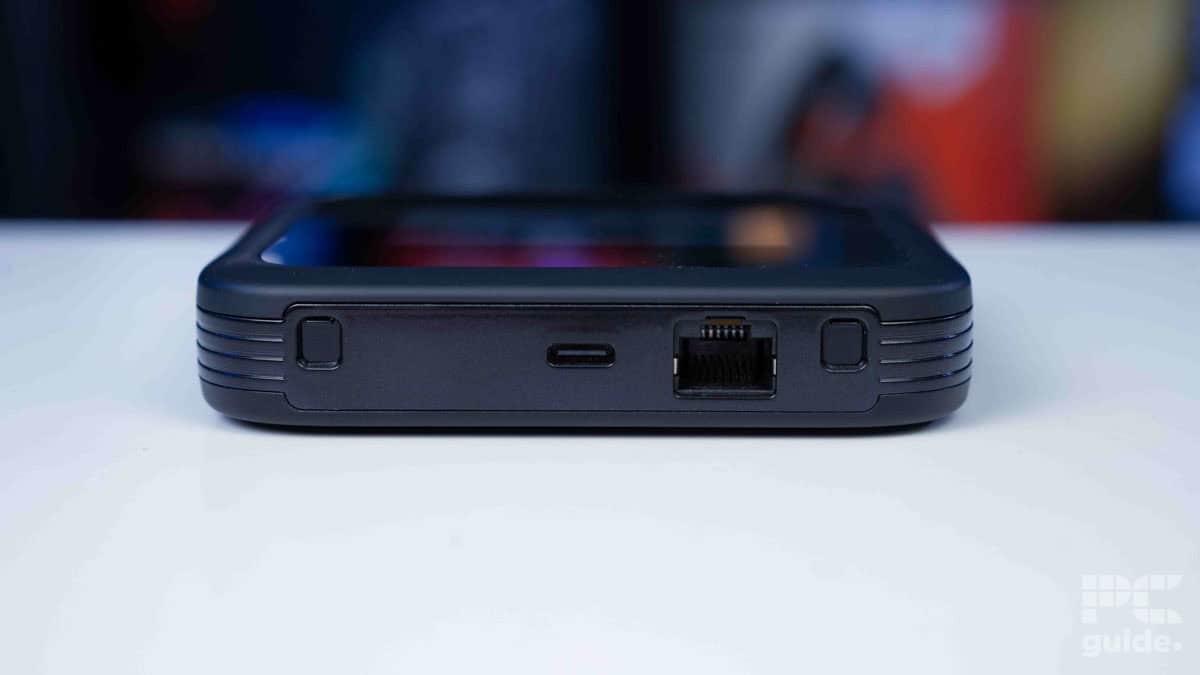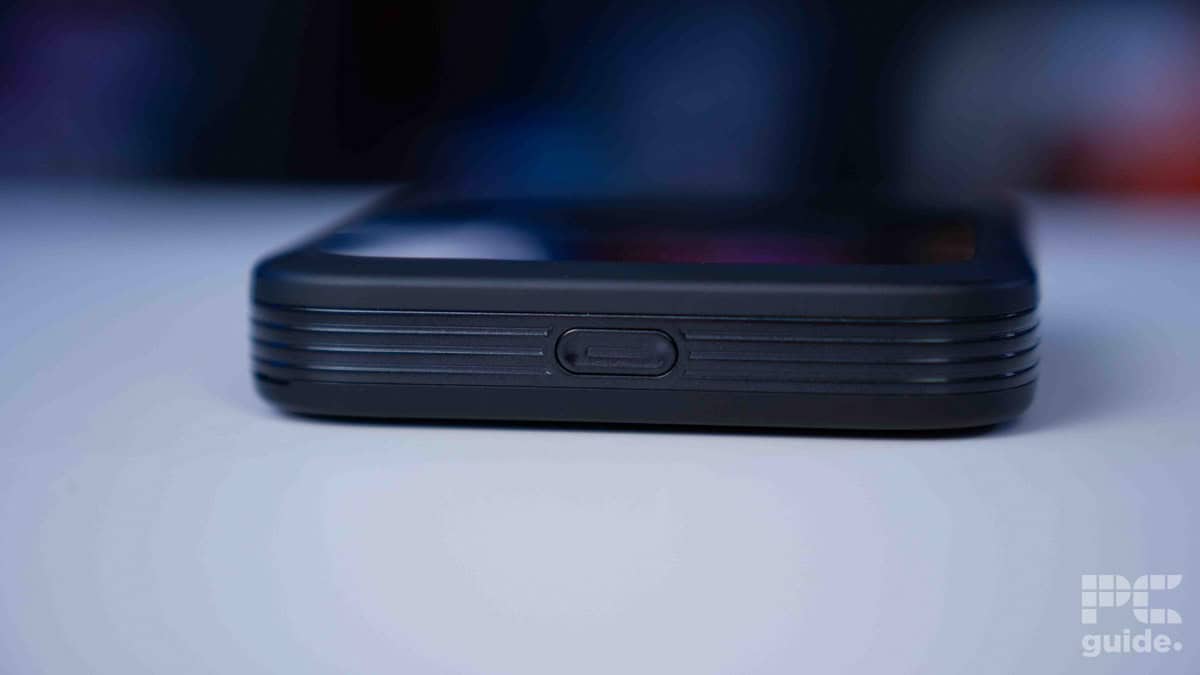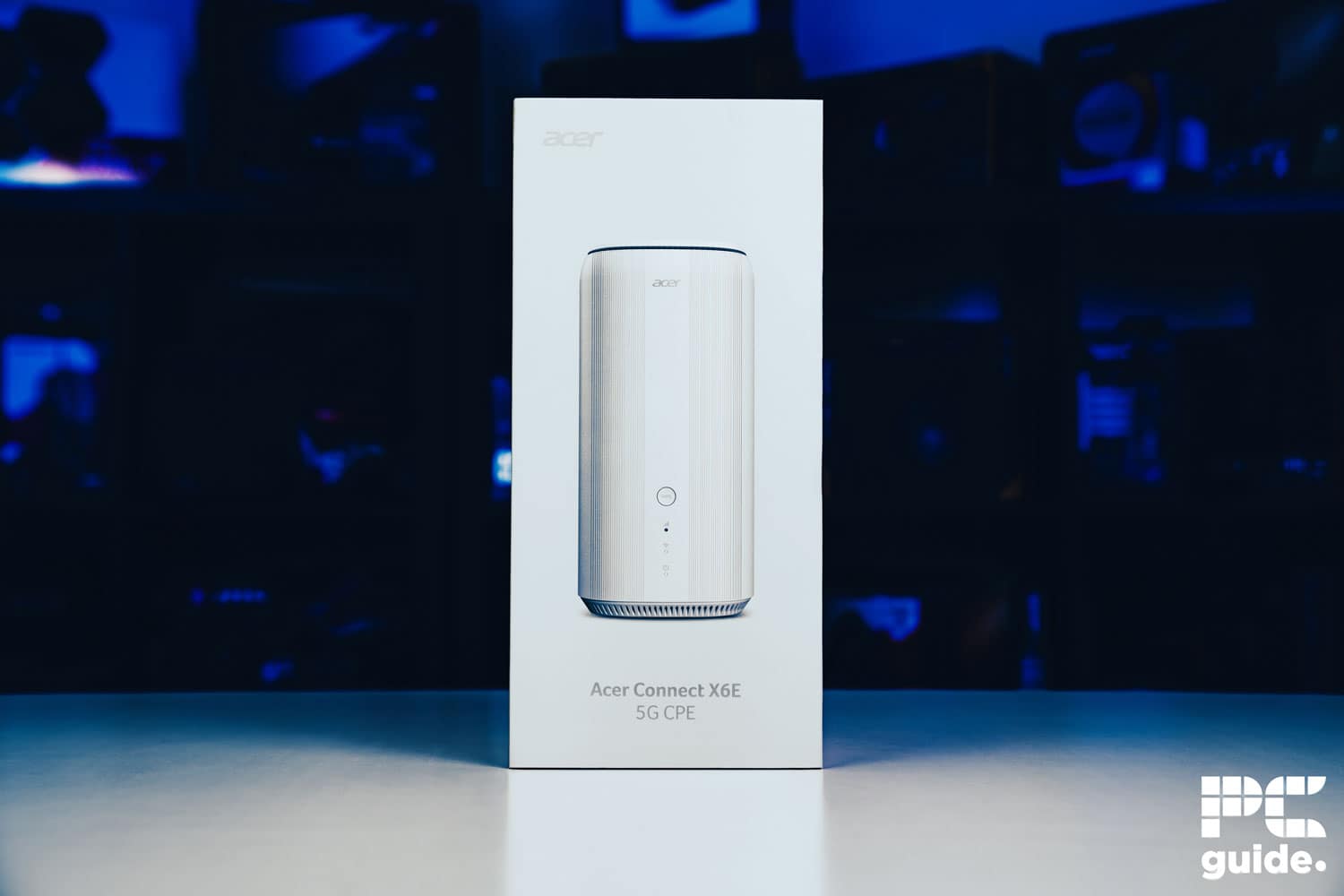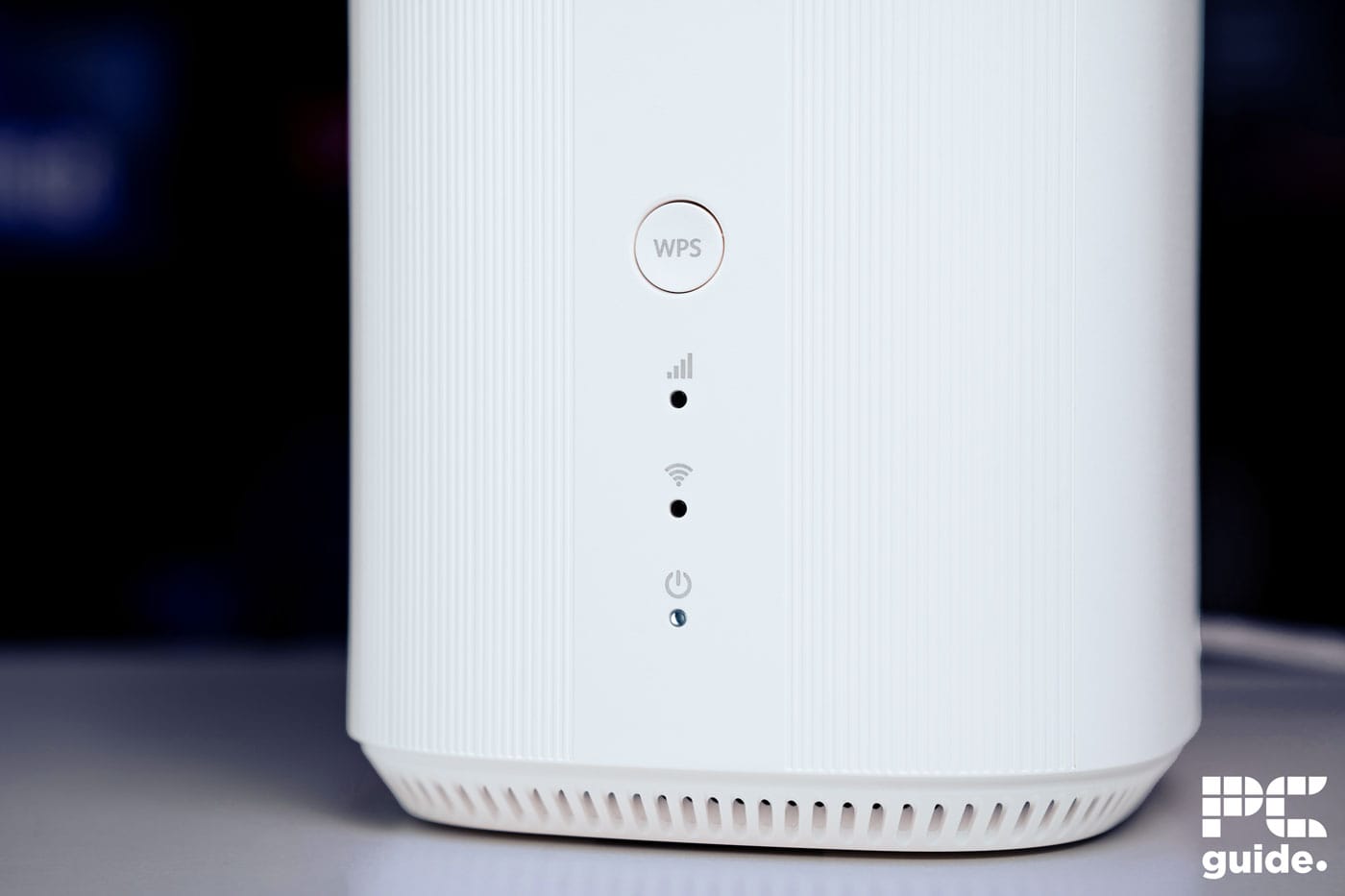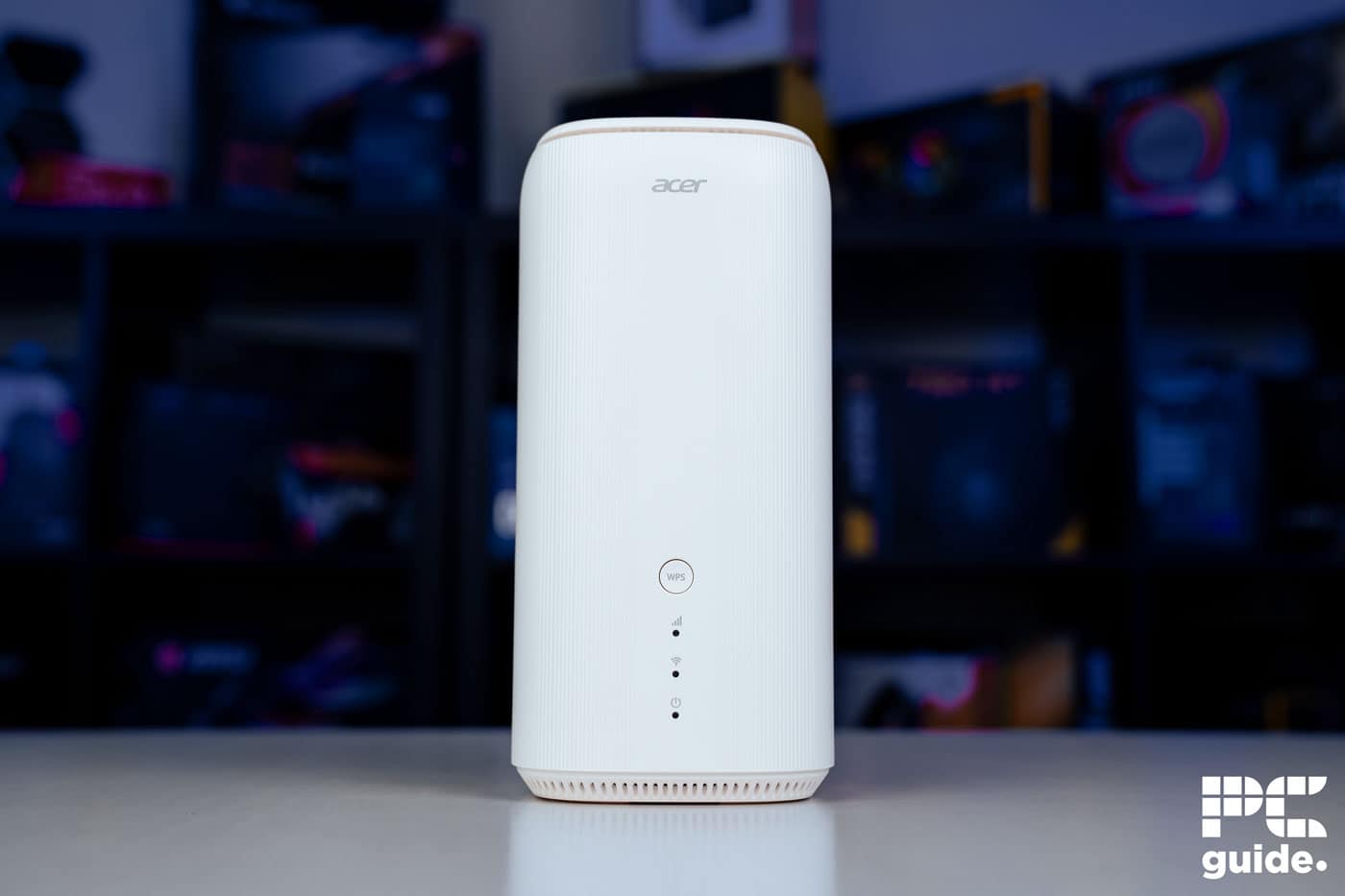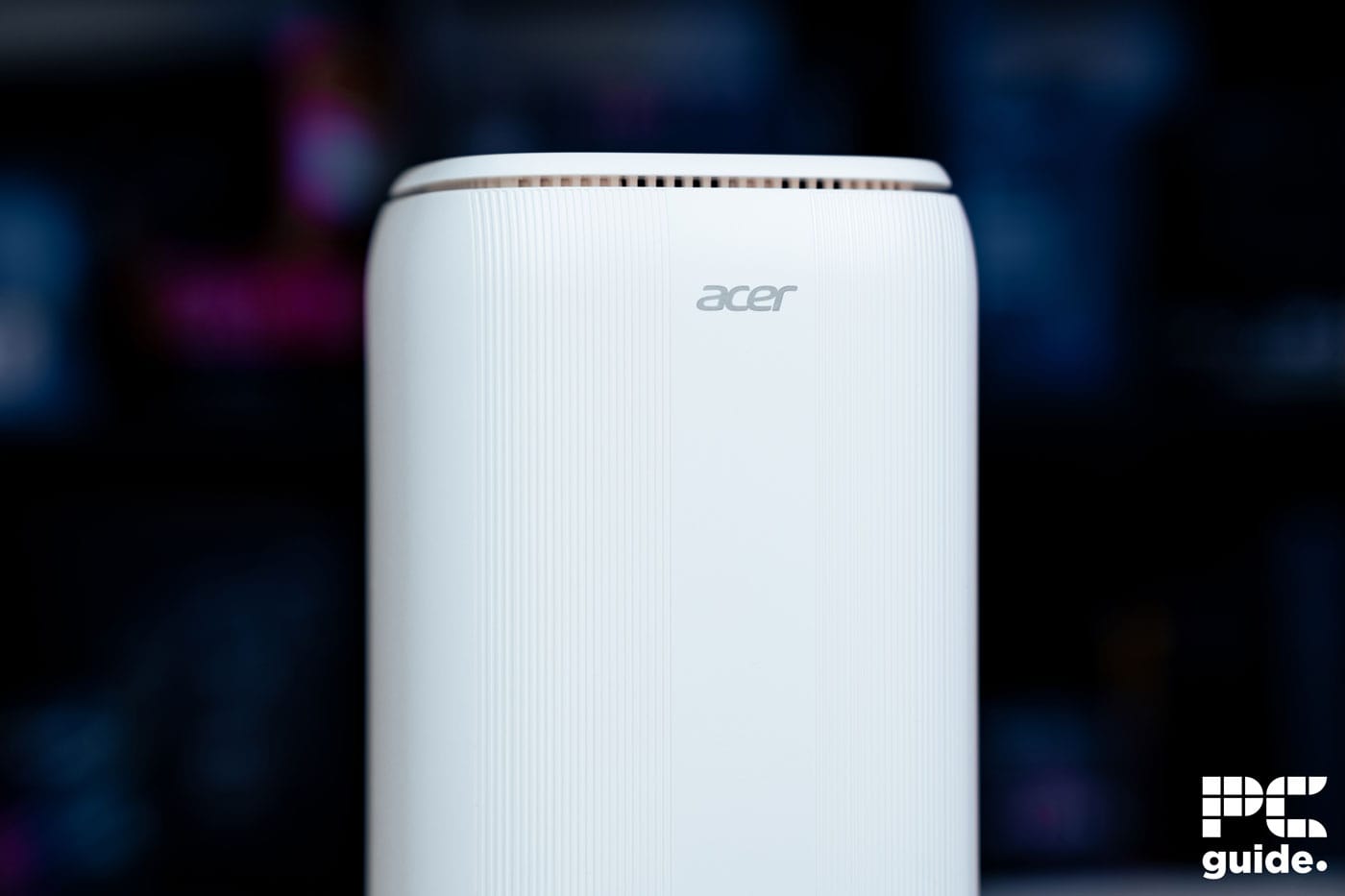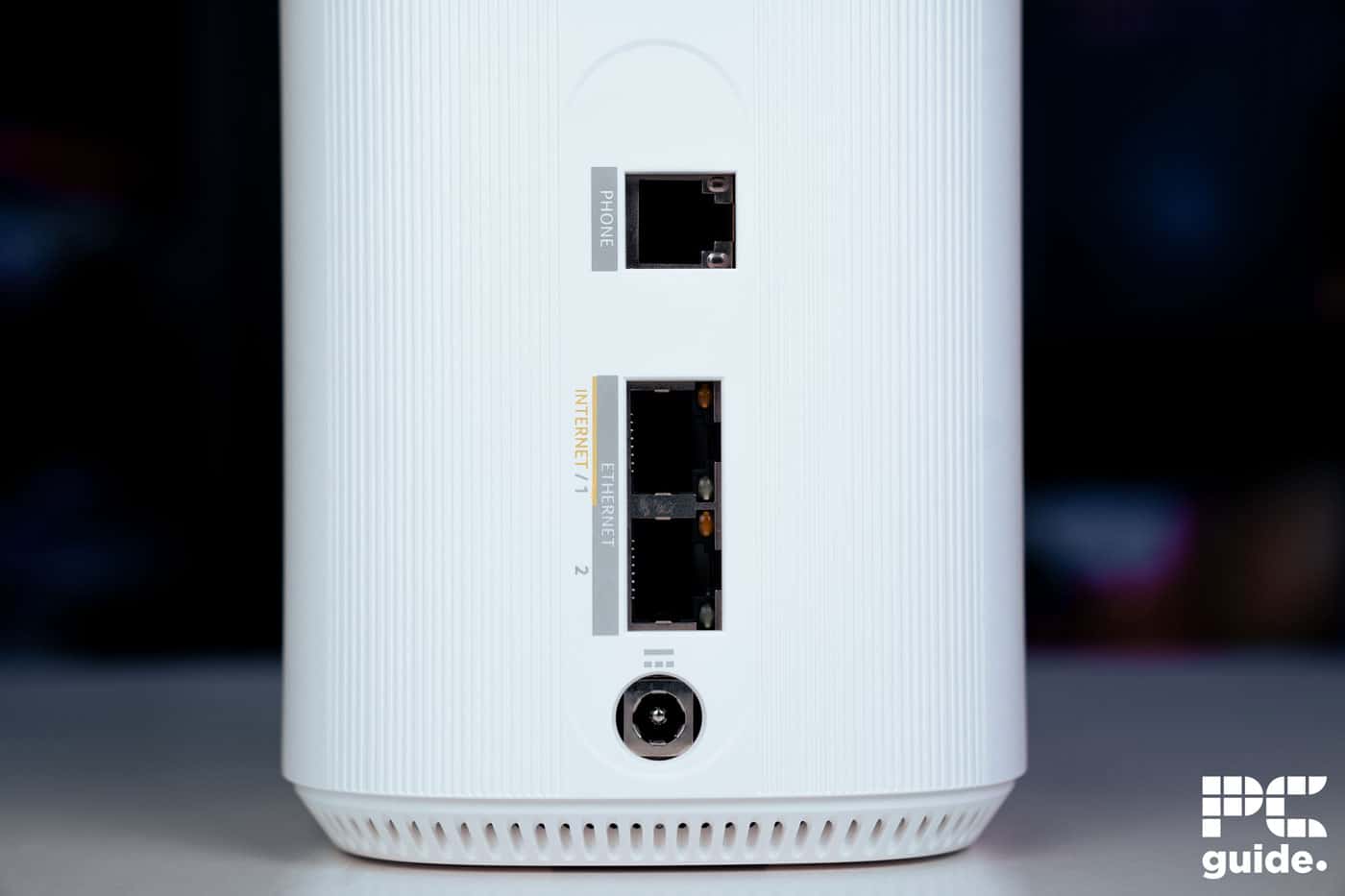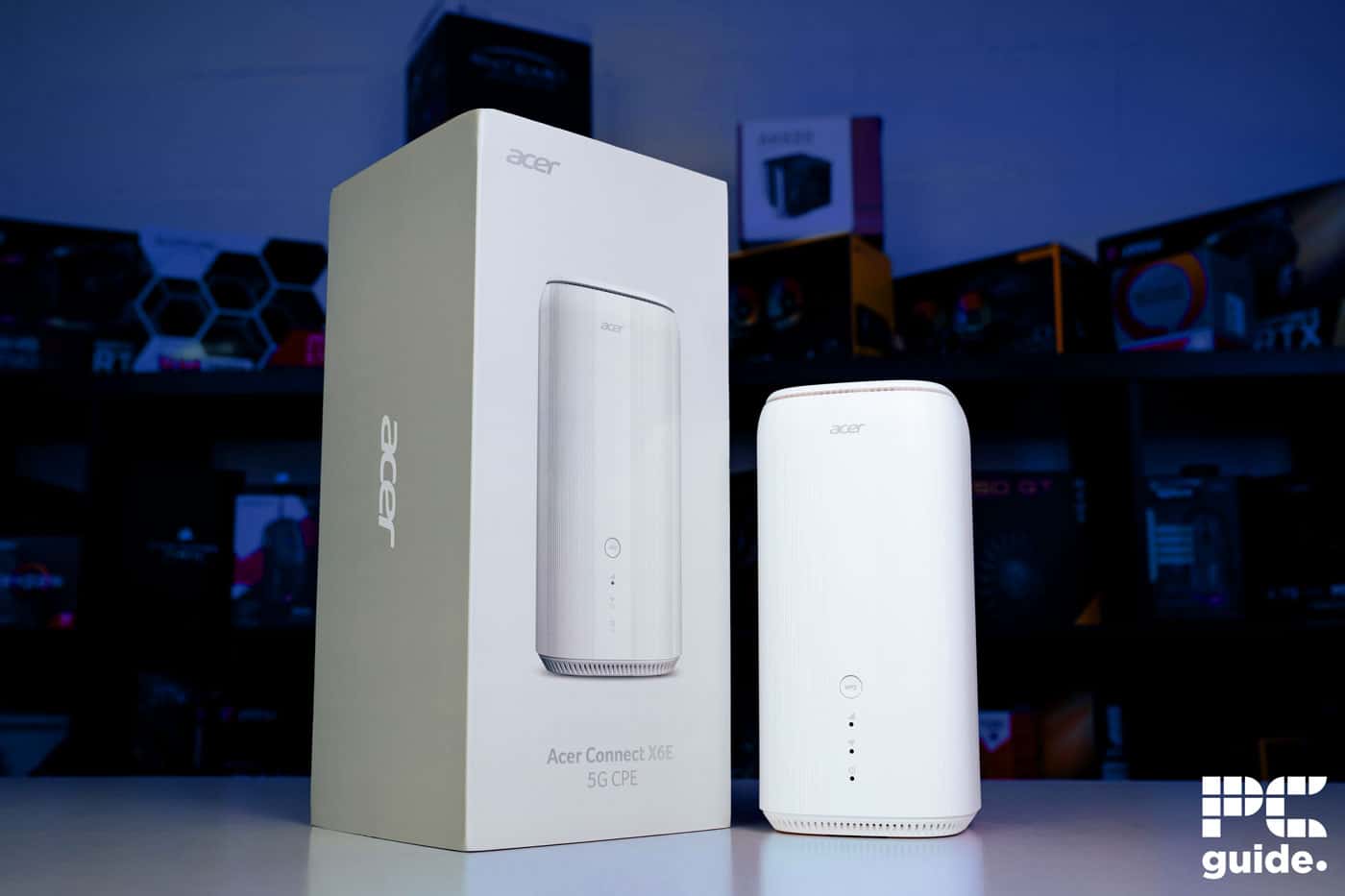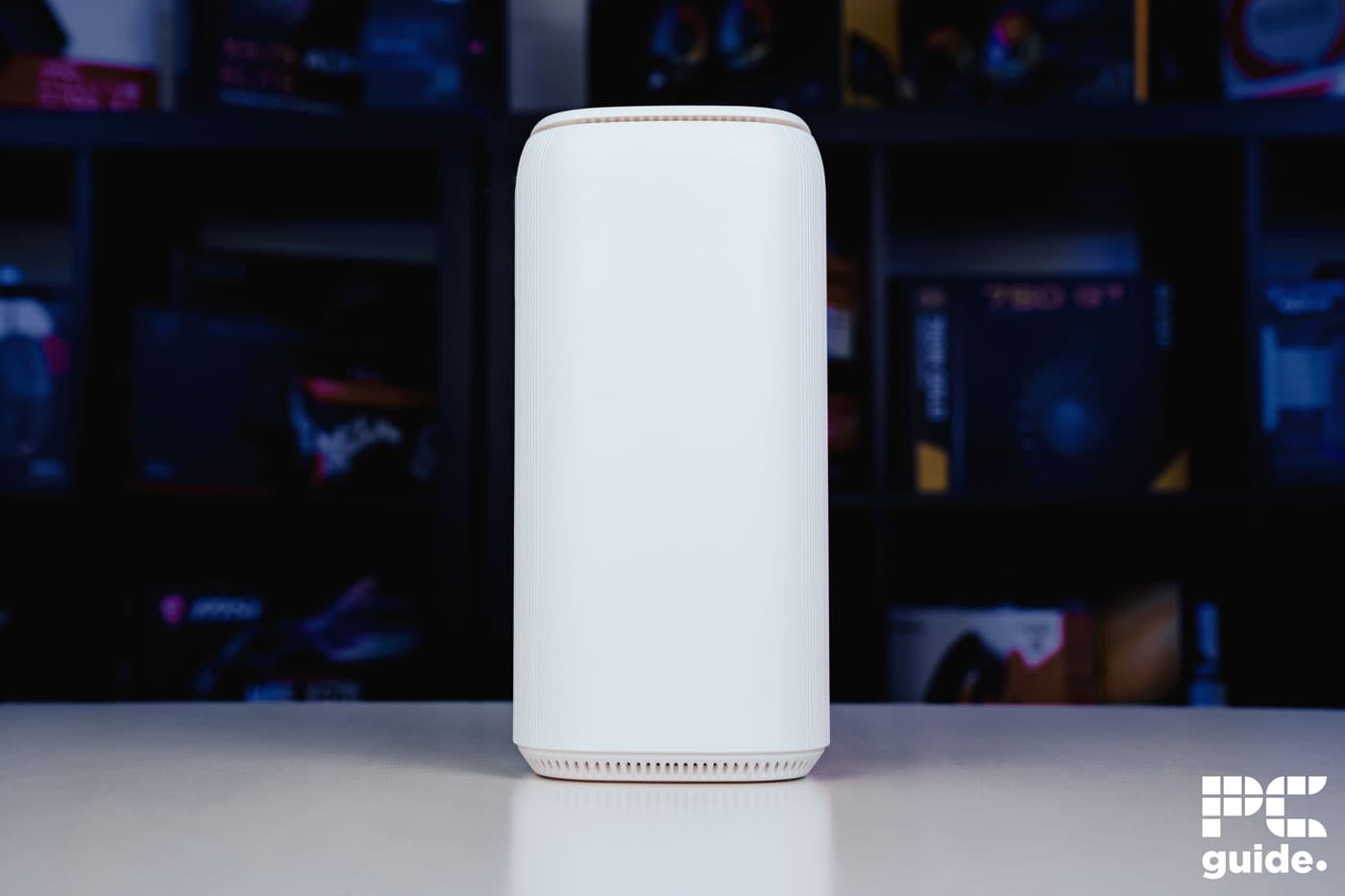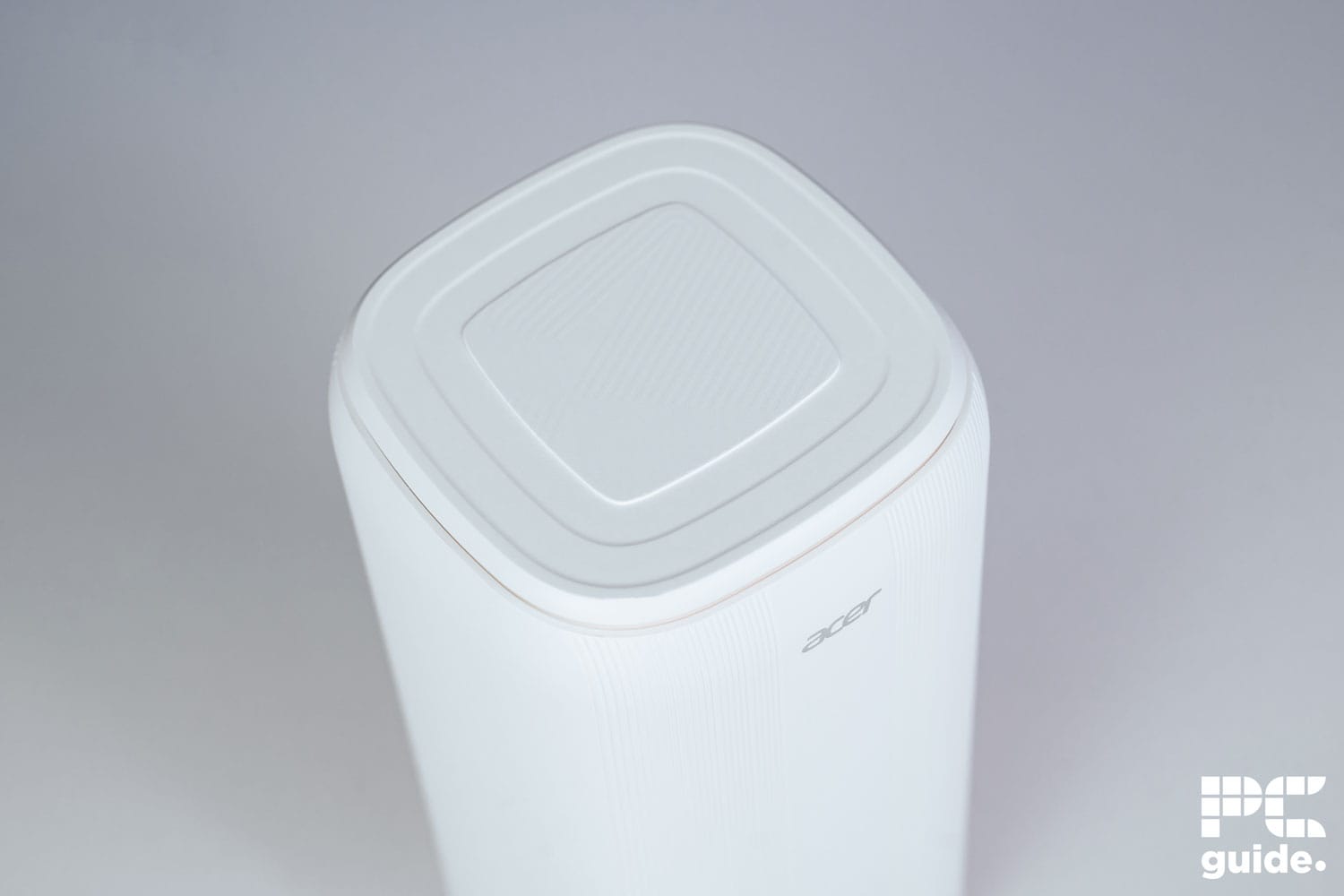Best WiFi 6E router in 2025 – our top picks
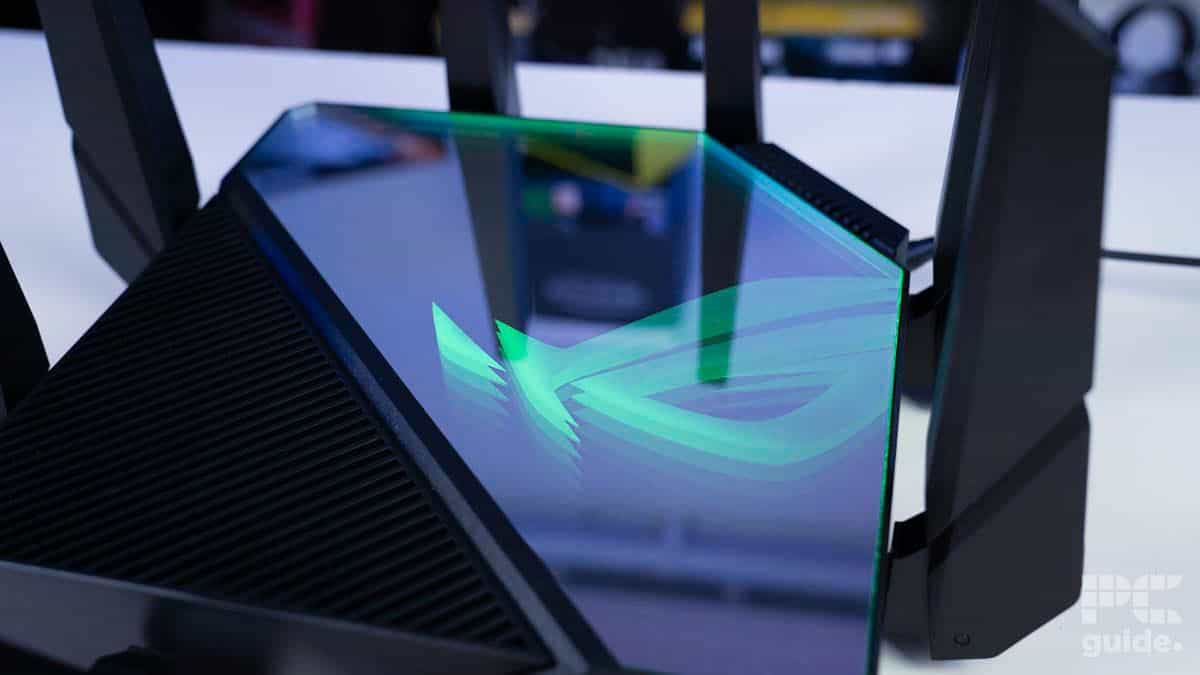
Table of Contents
A WiFi 6E router has plenty of benefits; you get an additional band, 6 GHz, which has a higher bandwidth than 5 and 2.5 GHz frequencies, lower latency, and better resistance to interference.
That said, this WiFi standard was released in 2021, and many manufacturers have adapted to it. This means there are plenty of router options available, offering various features at different costs. We’ve selected a handful of these routers based on their price, features, and the performance they showcased during our in-house testing. This helps us cut through the clutter and only recommend the best options. So, without further ado, let’s jump right into it.
-
Best WiFi 6E router overall:
ASUS ROG Rapture Wifi 6E Router (GT-AXE16000)
- Standard: WiFi 6E
- Frequency bands: 2.4 GHz, 5 GHz-1, 5 GHz-2, 6 GHz
- Max speed: 16000 Mbps
- LAN ports: 2x 10Gbps (WAN/LAN), 4x 1Gbps
-
Best WiFi 6E mesh router
Netgear Orbi RBKE963B WiFi 6E Mesh Black
- Standard: WiFi 6E
- Frequency Bands: 2.4GHz, 2x 5GHz, 6GHz
- Max Speed: 10.8Gbps
- LAN Ports: 1x 2.5Gbps, 3x 1Gbps (Router & Satellites)
-
Best portable WiFi 6E router
Netgear Nighthawk M6 Pro (MR6450)
- Standard: WiFi 6E
- Frequency Bands: 2.4GHz, 5/6GHz
- Max Speed: 2.9Gbps
- LAN Ports: 1x 2.5Gbps
-
Best value WiFi 6E router
Acer Connect X6E
- Standard: WiFi 6E
- Frequency Bands: 2.4GHz, 5GHz, 6GHz
- Max Speed: 5.4Gbps
- LAN Ports: 1Gbps + 1x RJ-11
How we picked
To find the best WiFi 6E router, we used our expertise to select items based on key specs, such as speeds, coverage, wireless standards, security, and additional features. We've also delved into and weighted market sentiment and user views to ensure our selections align with users’ experiences with these products.
However, we don't rely solely on specifications and reviews that anyone can read. We conduct in-house testing to check their signal strength, speed, and file transfer speed. If you're interested in learning more about our process, check out our How We Test Routers guide for a more in-depth understanding.
Our top picks

- Standard: WiFi 6E
- Frequency bands: 2.4 GHz, 5 GHz-1, 5 GHz-2, 6 GHz
- Max speed: 16000 Mbps
- LAN ports: 2x 10Gbps (WAN/LAN), 4x 1Gbps
- WAN: 1x 2.5Gbps, 2x 10Gbps (WAN/LAN)
- CPU: 2.0GHz quad-core processor
- Memory: 256MB NAND flash and 2GB DDR4 RAM
- USB: 1x USB 3.2 Gen 1, 1x USB 2.0 Port
- Dimensions: 354 x 354 x 193mm
- Weight: 2425g
- It supports the WiFi 6E standard and has quad-band functionality
- It has plenty of gigabit and multi-gigabit LAN/WAN ports
- It has excellent wall penetration
- The spider-like design might not fit an office setting
- It has a large footprint
- It is relatively expensive, especially for casual users
After carefully considering various aspects, we concluded that the ASUS ROG Rapture GT-AXE16000 is the best WiFi 6E router. On top of that, when we tested its performance for our Rapture GT-AXE16000 review, its signal strength and speed didn't disappoint.
For starters, this router has a maximum speed of 16000 Mbps, and has quad-band functionality. On top of that, it has a powerful 2.0 GHz quad-core CPU and 2 GB of DDR4 RAM powering its various networking processing.
However, it doesn't stop there. It has two 10G WAN/LAN ports, four 1G LAN ports, and one 2.5G WAN port. Besides that, it has 2.4, 2 x 5, and 6 GHz frequencies to work with. These specifications mean that it has everything you'll need to experience the full extent of your high-bandwidth internet connection, whether wired or wireless.
One of the two 5 GHz frequencies comes as a backhaul, but you can also use the 6 GHz as a backhaul by changing it in the settings. This is a good addition, as you can separate networks for different use cases, such as a guest network or an IoT network for smart home devices. This will ensure that no one band is overloaded and eliminate network congestion.
You could use the 6 GHz band for gaming or work, as it will deliver the fastest speed and lowest ping and keep the 2.4 GHz for maximum range. It also comes with ASUS RangeBoost Plus, which works to improve the range by up to 38%, according to ASUS. So, you should get significant coverage using its eight external and four internal antennas combined with this range-enhancing technology.
It might not be on the latest gen of WiFi anymore but it still has 6E with a whole range of frequencies to utilize, along with incredibly fast physical connections as well making it an allrounder.
PC Guide
It also comes with VPN Fusion and ASUS AiProtection Pro, which is free once you purchase the router. These features add an extra layer of protection and anonymity without compromising performance. For example, VPN Fusion allows you to run a VPN and normal network together, meaning fast speeds for online gaming, streaming, and professional workloads.
As for its range and performance, we checked its 2.4 and 5 GHz bands as we didn't have a 6 GHz compatible device. However, both bands connected to the 90ft mark, which includes two rooms and four walls between the device and router, meaning it has excellent range and wall penetration.
The 2.4 GHz band managed download speeds of 71.4 to 0 Mbps and upload speeds of 66.3 to 0 Mbps. The 5 GHz band saw better results, with download speeds of 244 to 47.9 Mbps and upload speeds of 280 to 9.8 Mbps. To put things into perspective, we have a 300 Mbps internet connection, so these results are pretty good.
Overall, the GT-AXE16000 is one of the best WiFi 6E routers that you can get your hands on. It has plenty of features, good coverage, and great protection features. That said, it does have an aggressive design as it caters to the gaming community, but if you can get past that, you'll find a router that will last you a good couple of years.
What users say
According to Amazon reviews, this router’s performance is “unparalleled.” It has excellent range and is reliable due to the addition of the 6 GHz band. One reviewer stated: “The ASUS ROG Rapture GT-AXE16000 is an outstanding router, especially for ASUS fans and avid gamers like myself. It offers superior performance, advanced technology, great coverage, easy management, and a stunning design.”

- Standard: WiFi 6E
- Frequency Bands: 2.4GHz, 2x 5GHz, 6GHz
- Max Speed: 10.8Gbps
- LAN Ports: 1x 2.5Gbps, 3x 1Gbps (Router & Satellites)
- WAN: 1x 10Gbps (Router)
- CPU: Quad-Core 2.2GHz (Router & Satellites)
- Memory: 512MB NAND Flash and 1GB RAM (Router & Satellites)
- USB: None
- Dimensions: 279.4 x 190.5 x 76.2mm (11 x 7.5 x 3in)
- Weight: 1.36kg (3.0lbs)
- It comes with a free trial of NETGEAR Armor
- It has excellent range and speed
- Four bands enabling separate networks eliminate network congestion
- It is very expensive
- Many features are locked behind a paywall
Mesh routers are the best option for large homes and offices, as no other router can beat their coverage. That said, for the best WiFi 6E mesh router, we recommend giving the NETGEAR Orbi RBKE963B a shot, as during our testing for its review, we weren't disappointed with the results it delivered.
To begin with, a 2.2 GHz quad-core CPU powers this router and its satellites, and they each have 1 GB of RAM. On top of that, like our top pick, it also has quad-band functionality with a max speed of 10.8 Gbps.
Besides that, it has three 1G, one 2.5G LAN port, and one 10G WAN port. The 10G WAN port is only for the router, while the other ports are found on each satellite. This means that you can have a wired connection at different points in your house or office where the satellites are located. This is great because it'll enable you to get faster speeds without interruption and get your work done quickly.
This WiFi 6 router comes in packs of 2, 3, and 4, with each node covering 3,000 sq. ft. We got our hands on the three-pack, which means a coverage of 9,000 sq. ft., which is great for large office or living spaces with multiple floors. That said, you can purchase more individual nodes from the NETGEAR website, but they cost $599.99 each, which is pretty expensive, to say the least.
For those needing to cover a lot of area without dropping signal, it's a strong choice if you can afford it.
PC Guide
A neat aspect of this mesh router is its dedicated backhaul to connect it with satellites. This means that you shouldn't experience performance degradation as more devices connect to the network. That said, it can support a maximum of 200 devices, making it one of the best routers for large houses, medium—to large offices, and even smart homes where plenty of devices require an internet connection.
For their range and performance, the 2.4 and 5 GHz bands were able to connect at all distances: 10, 30, 60, and 90ft. The 2.4 GHz managed to score -41 dBM and -70 dBM, while the 5 GHz got -48 and -89 dBM. The closer the score is to zero, the better the performance. Looking at the score, we can see that 2.4 GHz had better results when it came to range, which isn't surprising.
On the other hand, the download speed of 5 GHz was 197 to 57 Mbps at 60 ft and 227 to 83.9 Mbps upload speeds. 2.4 GHz managed download and upload speeds of 65.3 to 35.5 Mbps and 67.9 to 6.2 Mbps, respectively.
Overall, the NETGEAR Orbi RBKE963B has everything you'd need to cover every inch of your living or working space and accommodate every device. However, the downside is that this router comes at a premium, and if you want to extend your network, it'll cost you even more.
What user say
According to Amazon reviews, its wired backhaul feature, with its performance and coverage, is very well-liked. One reviewer stated, “This system is a remarkably innovative product from Netgear that garners a flawless 10/10 rating from me, convincingly dazzling with its impressive features and powerful performance.”

- Standard: WiFi 6E
- Frequency Bands: 2.4GHz, 5/6GHz
- Max Speed: 2.9Gbps
- LAN Ports: 1x 2.5Gbps
- WAN: Same as LAN
- CPU: Qualcomm Snapdragon X65 5G
- USB: 1x Type-C
- Dimensions: 21.5 x 105 x 105mm (0.85 x 4.14 x 4.14in)
- Weight: 256g (0.56lbs) w/ battery
- Battery: Removable 5,040mAh Li-ion
- Screen: 7.1cm (2.8″) touch
- It works with any unlocked SIM and delivers fast WiFi speeds
- It has a 2.5 Gbps WAN/LAN port for wired connections
- The touchscreen makes it easy to access various settings
- It is very expensive for a portable router
- You can only use one WiFi band at a time
- The battery life isn't great unless you put it on the lowest power settings
If you are looking for a router you can take with you on the go that delivers excellent speeds, we recommend the NETGEAR Nighthawk M6 Pro (MR6450). Not only is it designed to be travel-friendly, but in our Nighthawk M6 Pro review, it delivered exceptional results.
This portable WiFi 6E router features a Qualcomm Snapdragon X65 5G processor, a 2.5G LAN/WAN port, a max speed of 2.9 Gbps, and tri-band functionality. What this means is its hardware has enough capabilities to support and deliver adequate speeds to its maximum threshold of connected devices, which is 32.
It features a 5,040 mAh Lithium-ion removable battery that NETGEAR claims lasts for 13 hours. On top of that, it is unlocked, which means you can take it across borders, switch SIM cards, and continue enjoying fast internet speeds. That said, it can support the fastest 5G speeds and create a network with either of the three frequencies, but obviously, the 6 GHz band would deliver the lowest latency and fastest speed.
It does have great adaptability and plenty of features but costs a lot especially as even though it might be a WiFi 6E router.
PC Guide
A neat feature of this router is that it comes with two TS-9 external antenna ports, meaning you can increase its 1,000 sq. ft. range and coverage by simply attaching the antennas. The MR6450 comes with a 2.8” color LCD touchscreen, which displays data usage, settings, network map, and more information. So, getting vital information like how much data you've used, among other things, is made much easier.
NETGEAR also claims that you should experience wired speeds of up to 5 Gbps with USB-C and 2.5 Gbps with an Ethernet connection. However, we tested its wired speeds, delivering download speeds of 265.6 Mbps and upload speeds of 283.9 Mbps.
Its 2.4 and 5 GHz bands connected to the device till the 60ft mark, which is at the edge of 3,500 sq. ft., meaning well beyond its advertised range. That said, we tested their download and upload speeds via mobile and Ethernet connections and got the following results.
The 2.4 GHz mobile download speed was 11 to 8 Mbps, while upload speeds were 13.5 to 8 Mbps. As for the download and upload speeds via Ethernet, they were 33.7 – 9.1 Mbps and 43.8 – 5.3 Mbps, respectively. On the other hand, 5 GHz mobile download speeds were 149.5 – 52.1 Mbps, and upload speeds were 17.5 – 14.1 Mbps. Ethernet speeds for the 5 GHz were significantly better as the download speeds ranged from 262 – 60.2 Mbps and 270 – 58.1 Mbps upload.
These numbers should give you a good idea as to the level of performance you can get from this router, and we weren't disappointed, given its portable nature. Overall, this is an excellent router that you can take anywhere with you, create a protected network, and enjoy high speeds. However, it does come with a heavy price tag, which might be a deal breaker for some.
What users say
According to Amazon reviews, this router is praised for its ease of setup, performance, and coverage. One user stated: “In a nutshell, the NETGEAR Nighthawk M6 Pro is an impeccable marriage of design, function, and performance.”

- Standard: WiFi 6E
- Frequency Bands: 2.4GHz, 5GHz, 6GHz
- Max Speed: 5.4Gbps
- LAN Ports: 1Gbps + 1x RJ-11
- WAN: 1Gbps
- CPU: Qualcomm SDX62 + IPQ5018 + QCN9024
- Memory: 512MB Storage, 256MB LPDDR
- USB: USB-C
- Dimensions: 101 x 101 x 206mm
- Weight: 930g
- Dual WAN capabilities
- Good packaging to get out and set up the router
- Strong default security with guest network and parental controls
- Can't use both 5 and 6GHz frequencies at the same time
- Doesn't prompt for firmware updates
- Limited availability
For those looking for a high-speed wired or wireless connection but don’t want to spend a huge amount of money, we recommend the Acer Connect X6E. We’ve tested and reviewed this WiFi 6E router in-house, and it showcased great performance and signal strength.
The WiFi 6E standard gives it tri-band capabilities, meaning you get 2.4GHz, 5GHz, and 6GHz frequencies. However, you can only use the 5GHz or 6GHz at a time, while the 2.4GHz works separately. This is a bit weird but we recommend going for the 6GHz as it has a higher bandwidth and speed limit than the 5GHz.
On top of that, it has a 5.4Gbps maximum speed, so it can be paired with a gigabit or multi-gigabit internet connection without any issues and transfer the speed via wired or wireless connection. That being said, it also features a 1Gbps LAN and WAN port and one RJ-11, meaning you can also connect a phone if it is offered with your internet plan.
The Acer Connect X6E provides a strong solution for your networking setup. Being a mobile router makes it a useful feature if you want to use it in different places, or combined with ethernet can give you a dual WAN solution. Giving you versatility and a backup. It also provides plenty of features and controls, without locking them behind a paywall.
PC Guide
This router measures 101 x 101 x 206mm and weighs 930 g. So, it shouldn’t stand out much in your living or working space, and its design should help it blend well in different settings. A neat aspect of this router is that you can insert a SIM card and create a 5G hotspot on the go, making it a good option as a travel router. However, since it isn’t battery-operated, you’ll need a wall socket to establish a power connection.
That said, it allows you to track the data being used on the 5G network so you don’t exceed your limit. We check our routers by connecting to them at different distances like 10ft, 30ft, 60ft, and 90ft. At the furthest distance, there are two room or four walls between the router and the device, while at 60ft, there is a single room.
The 2.4 and 5GHz bands were able to connect up to the 60ft mark. The 2.4GHz delivered download speeds of 58.2 to 45.6 Mbps on network and 129 to 41 Mbps on mobile. The upload speeds ranged from 105 to 18.9 Mbps on network and 46.9 to 16 Mbps on mobile. As for the 5GHz frequency, it managed 90.1 to 71.5 Mbps download on network and 232 to 123 Mbps on mobile. The upload speeds were 286 to 54 Mbps and 46 to 39 Mbps, respectively.
Overall, this router has excellent performance on network and mobile with good latency and coverage. While there are routers that offer a better range, we need to consider its price as it costs less than other options.
How to pick the best WiFi 6E router
Picking up the best WiFi 6E router isn't just about going to the market and choosing one of the best wireless routers. Instead, you need to carefully look at its specs, performance, and the type of security features it offers. Here are a few things to consider before making a purchase.
Budget
The first thing you need to consider is your budget and how much you can spend on a new router. This is important as it'll enable you to filter the tons of options available and pick one that best suits your needs. For example, if you don't have a gigabit internet connection, then you most likely don't need a router with a 10G LAN and WAN port or port aggregation. These features will only hike up the price and you'll be paying more for something you won't fully use.
So, the best option is to look for a router that can cater to the number of devices in your house or office and has good signal strength to spread the signals adequately.
Range
The second factor you need to look for is the router's range. You'd be throwing away your money if the router you opt for doesn't cover your living or working space and leaves dead zones. There are plenty of routers with varying ranges, but if you have a medium to large house, ensure that the router has a coverage of 3,500 sq. ft.
However, if the space has more than four or five rooms, we recommend opting for a mesh router to eliminate any potential dead zones. If you're interested in exploring some options, check out our guide for the best WiFi router for long-range use.
Ports
If you have a high-speed internet connection, ensure the router has a gigabit or multi-gigabit WAN and LAN port. This is important because if your router doesn't have a port that can handle the high-bandwidth connection, you won't experience the full speed of the plan you're paying for via wireless or wired connection. It doesn’t matter if the router supports WiFi 6E standard; it'll only dissipate the speed it’s receiving from the ISP.

